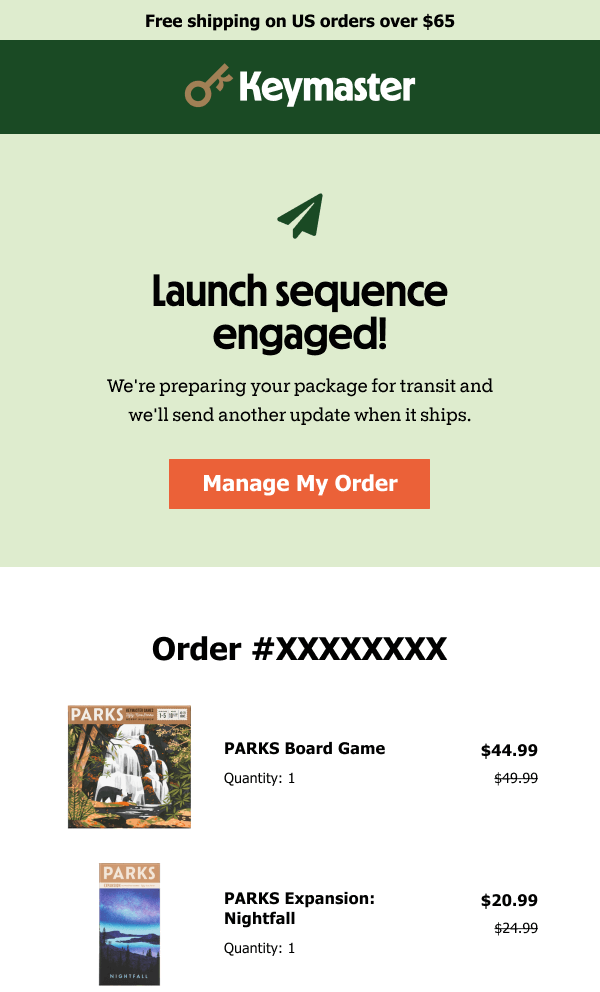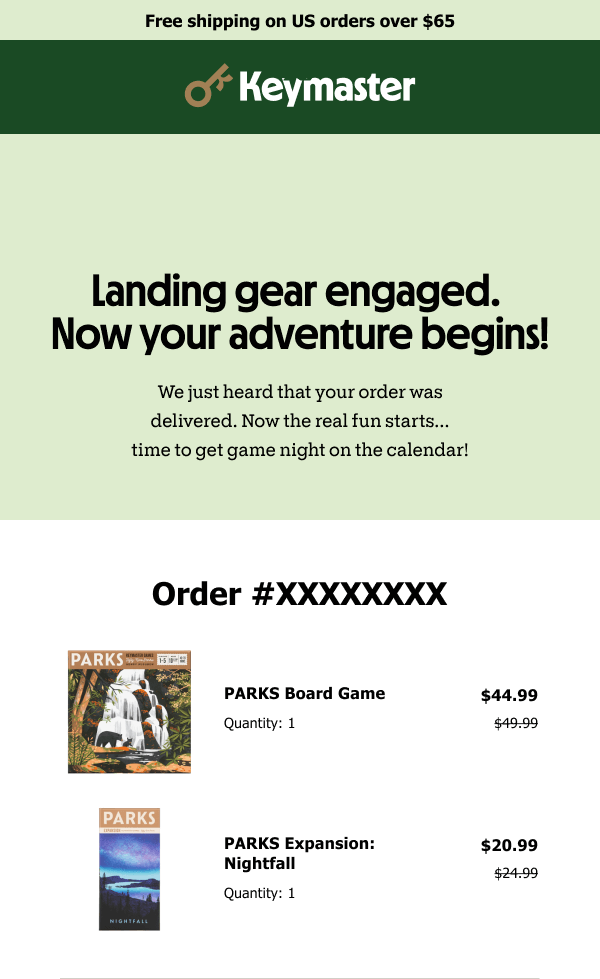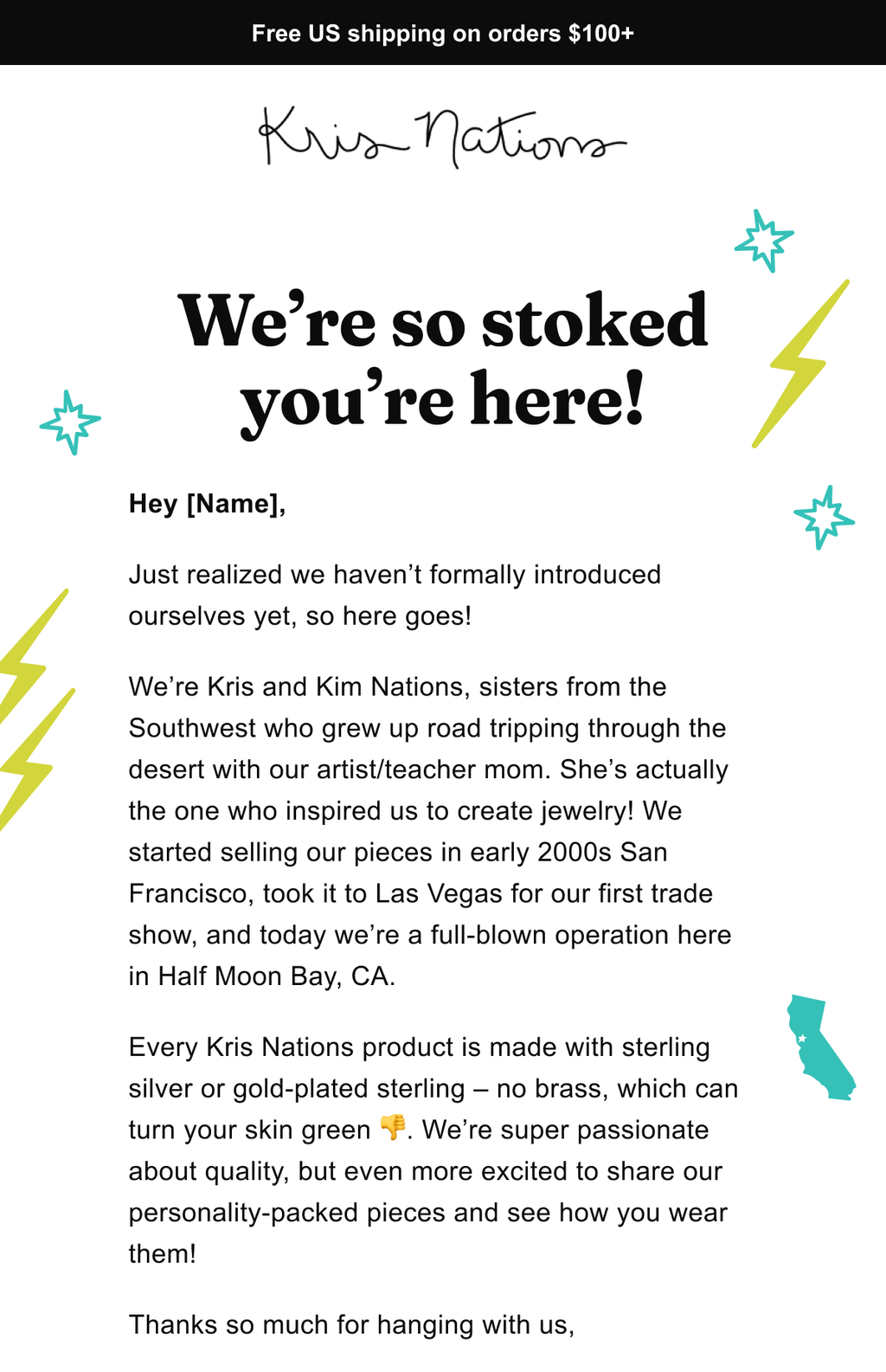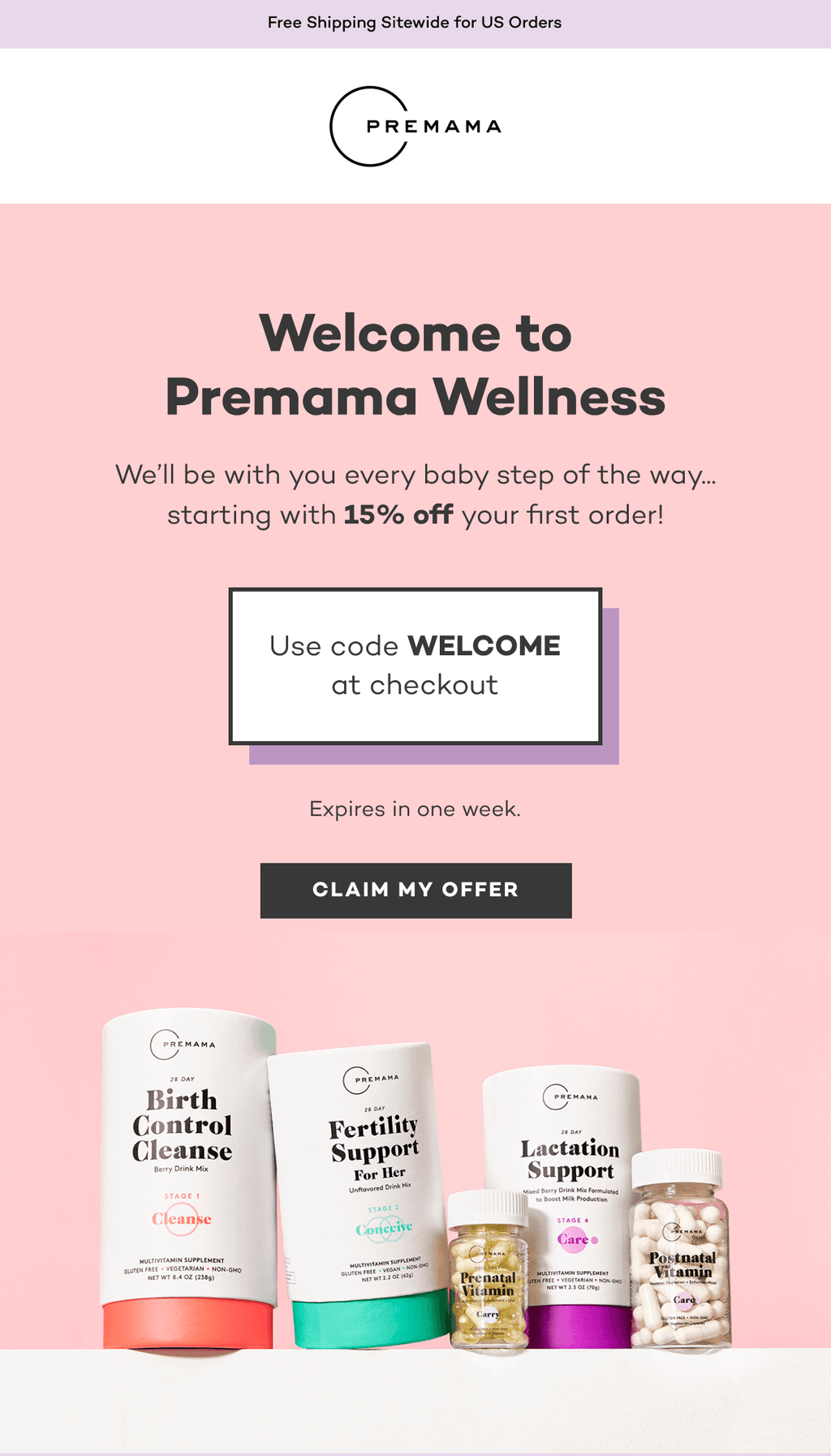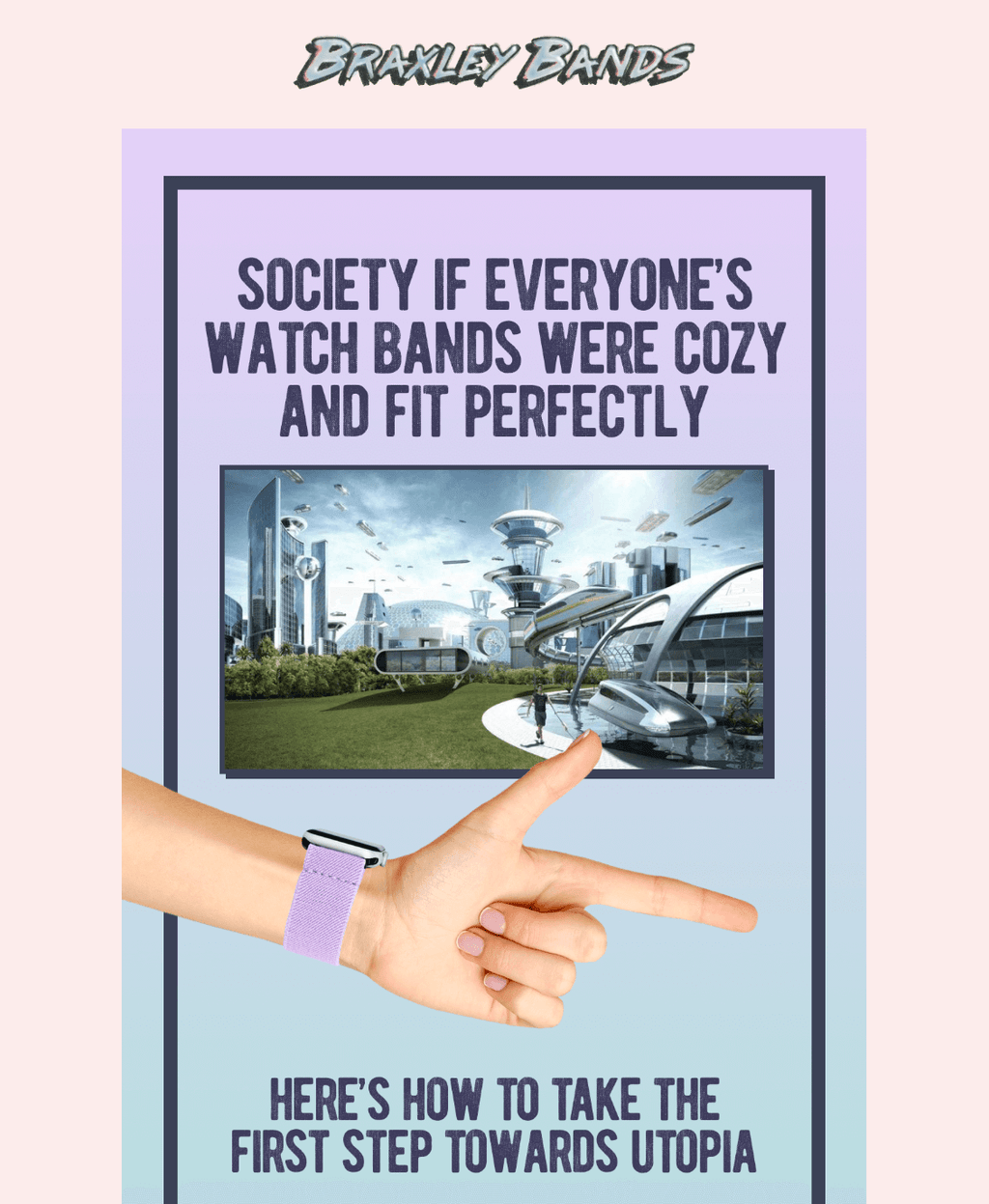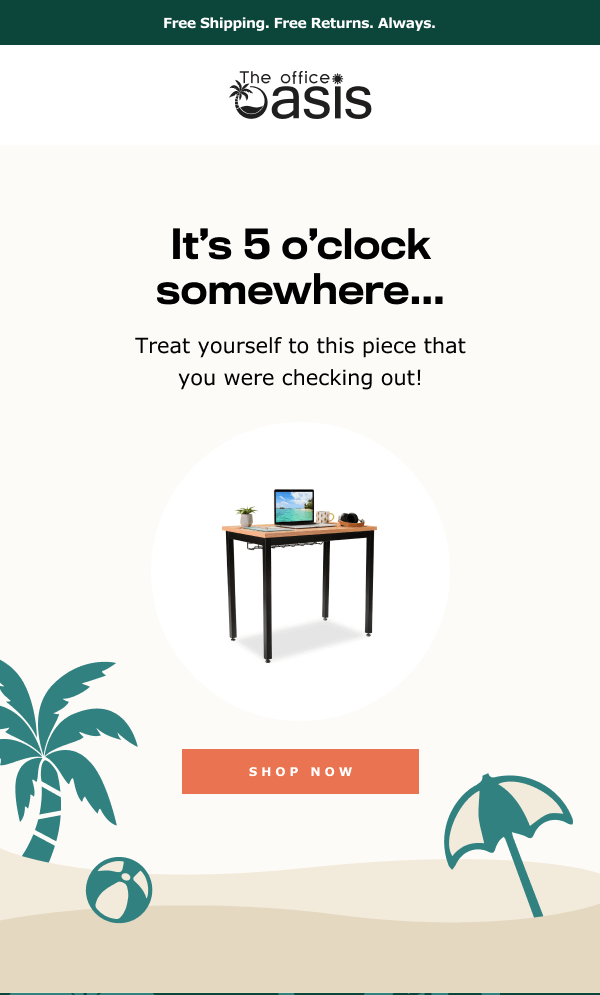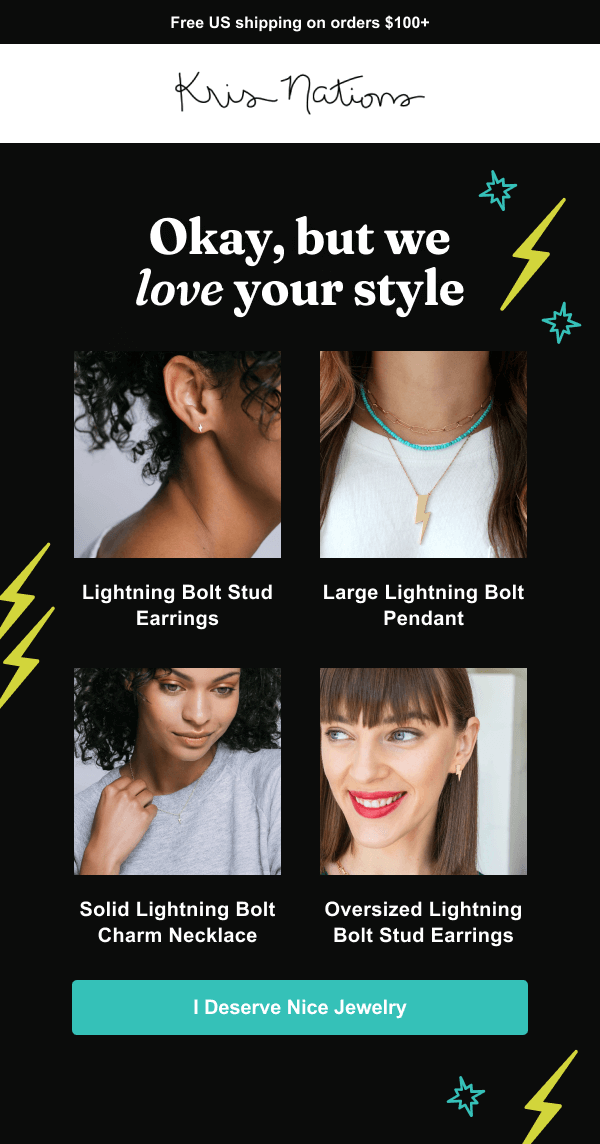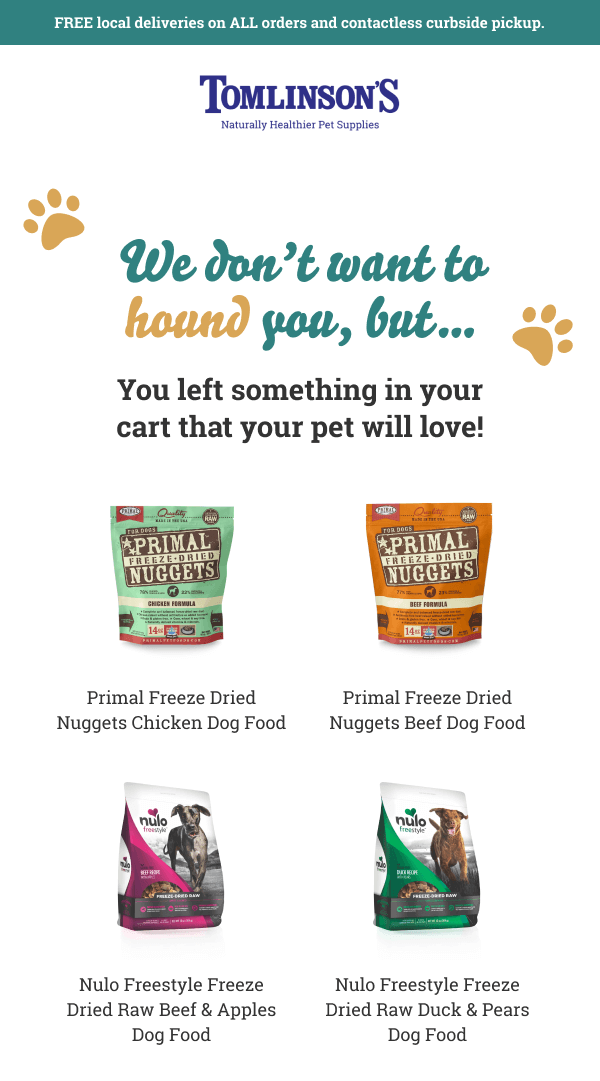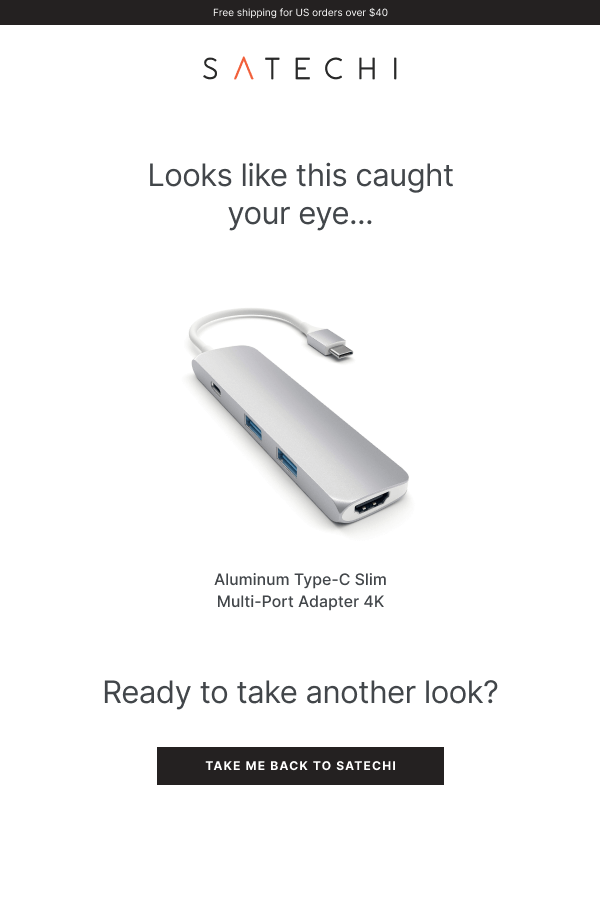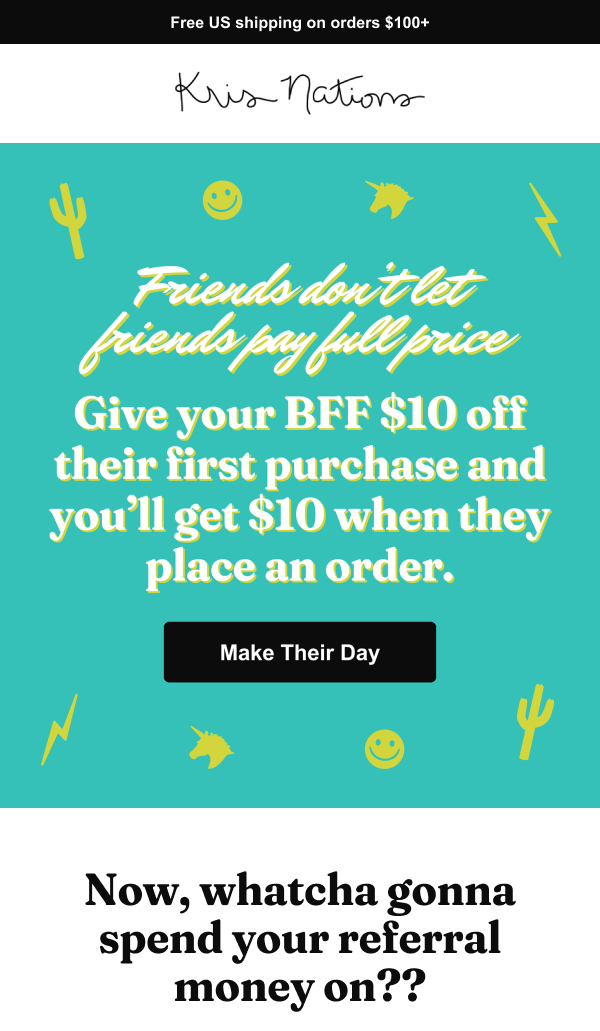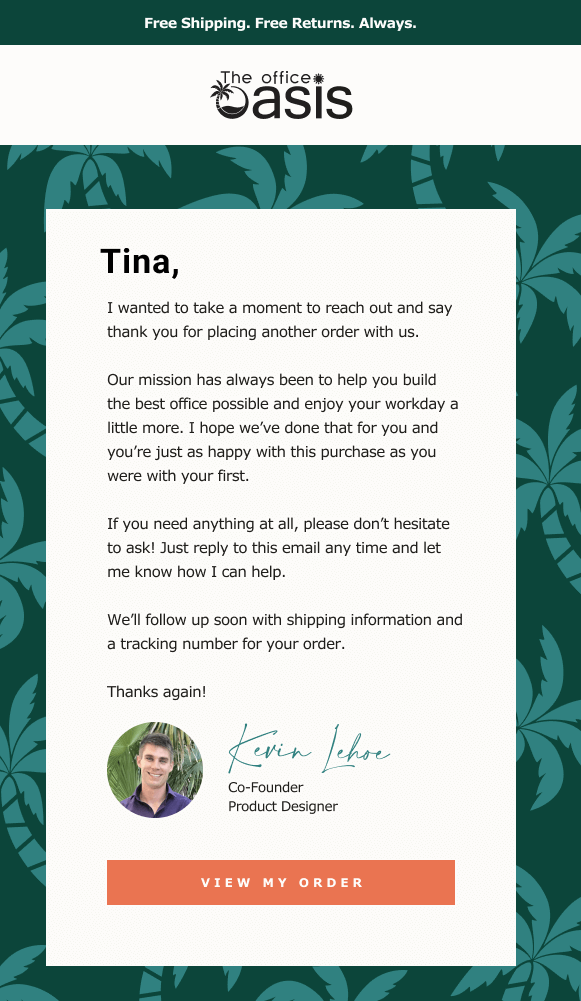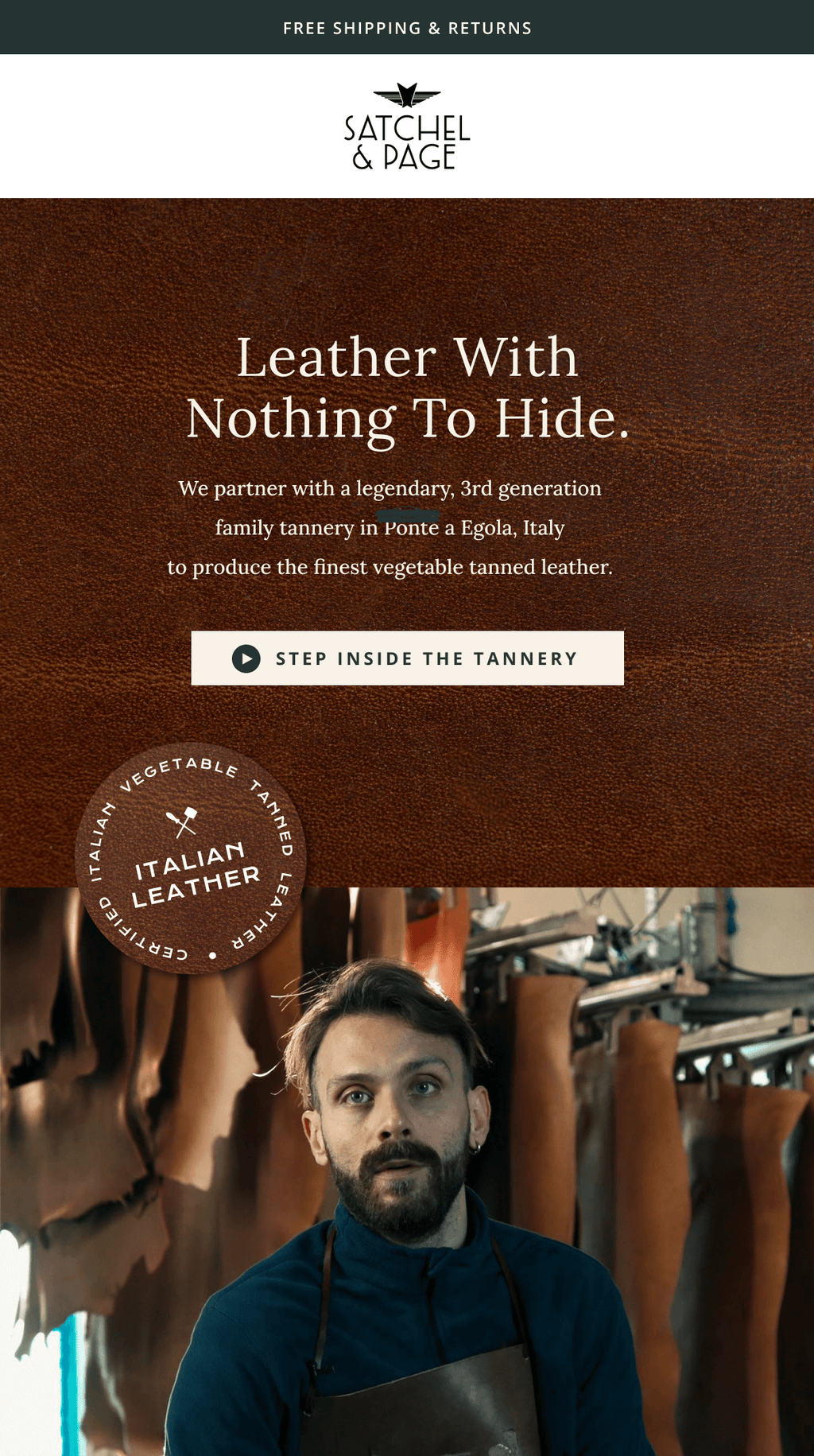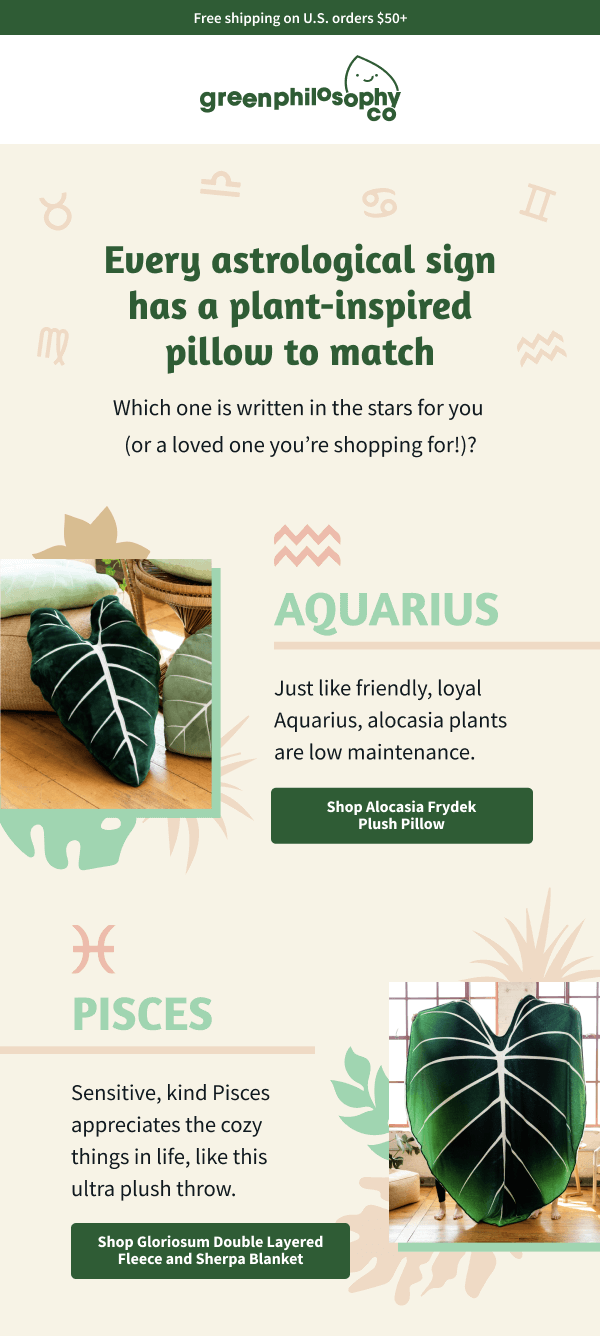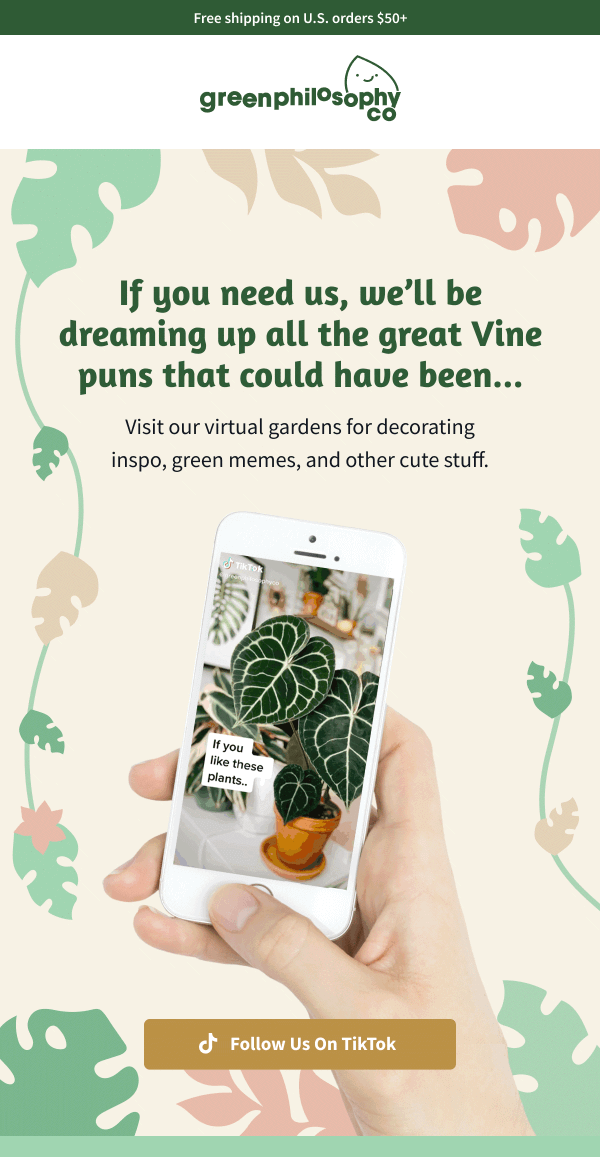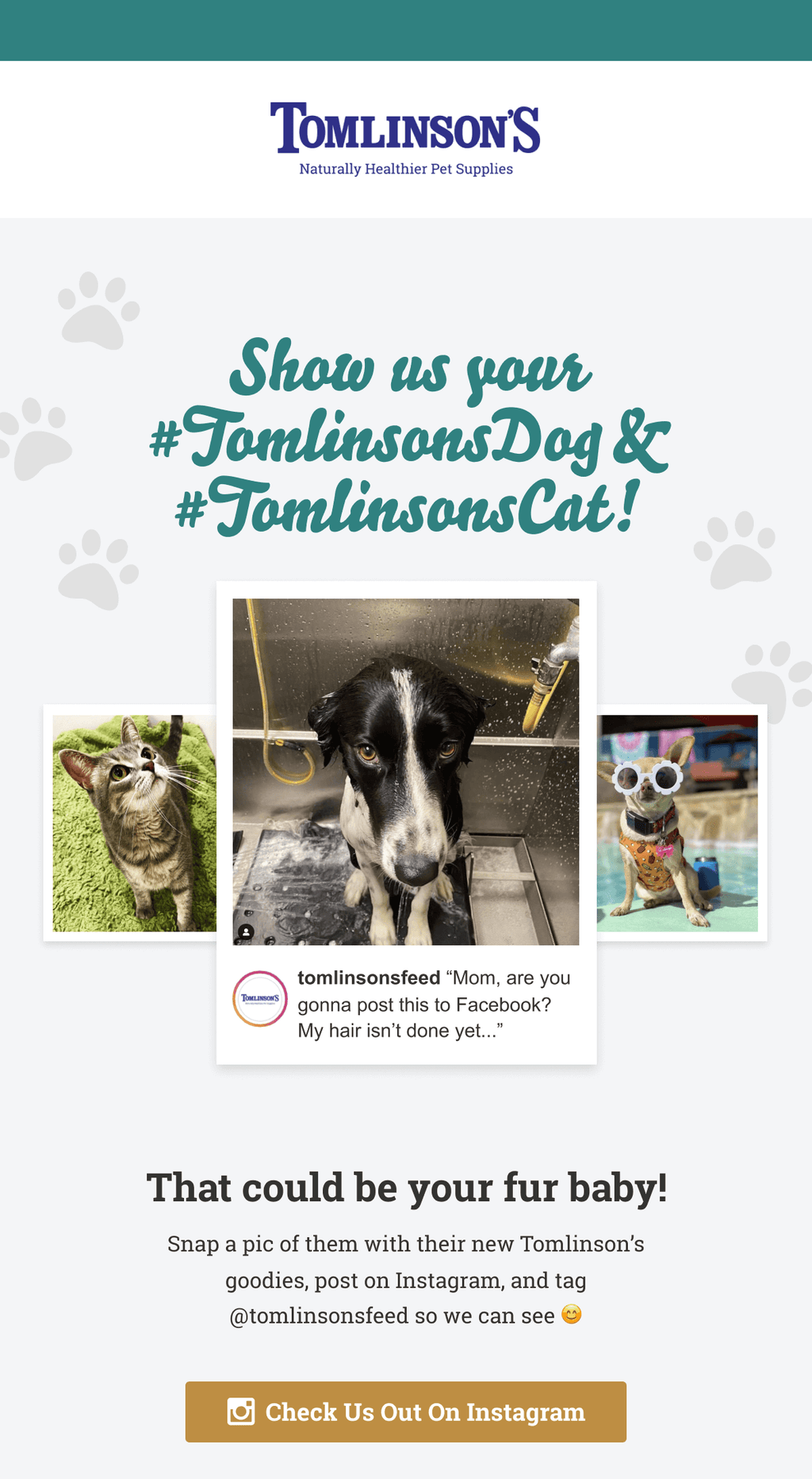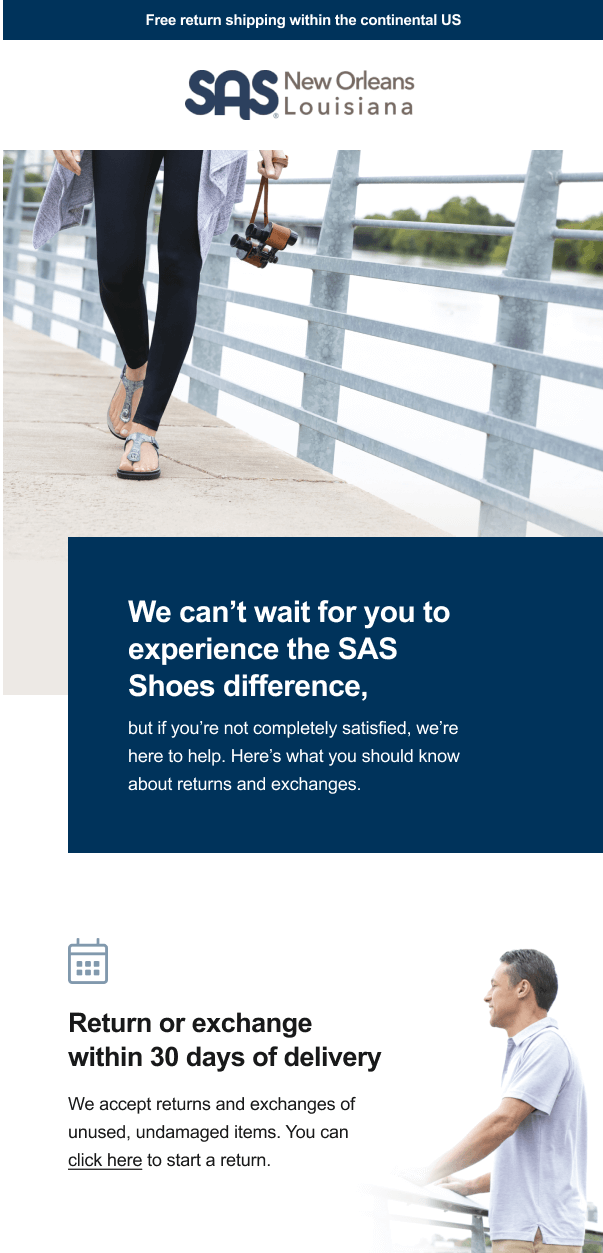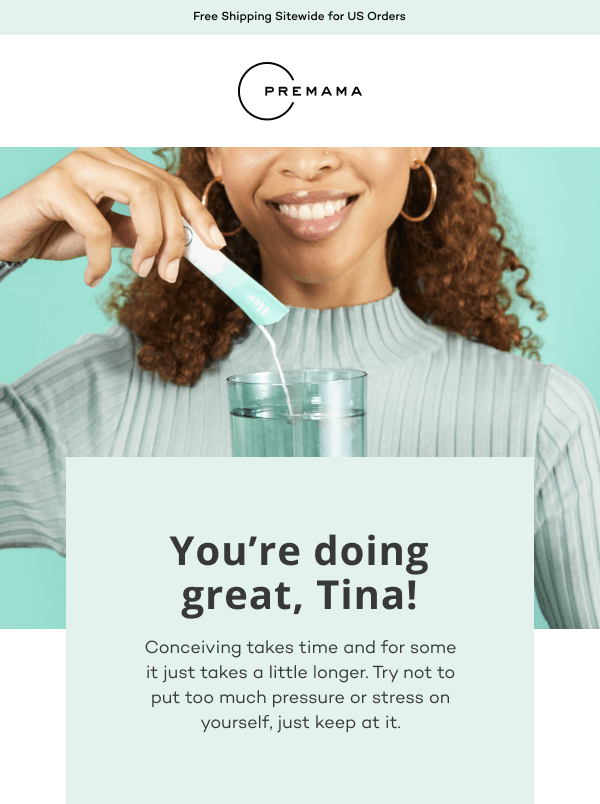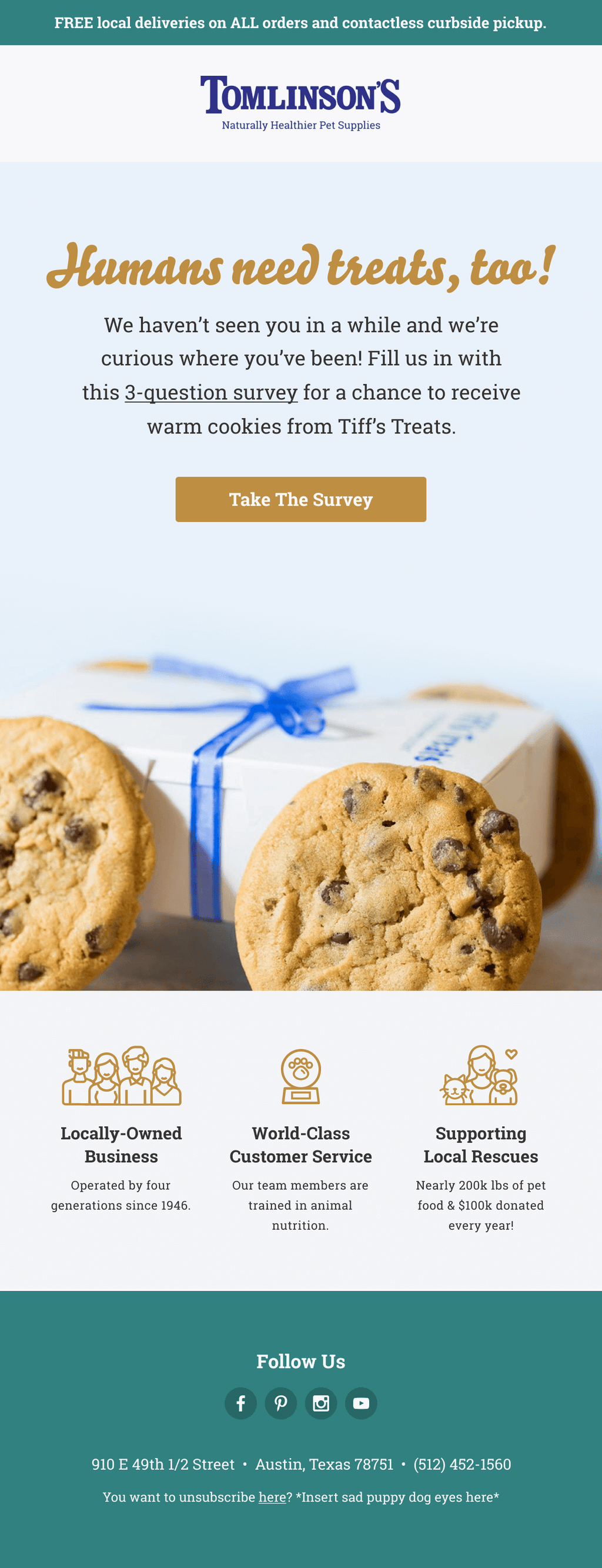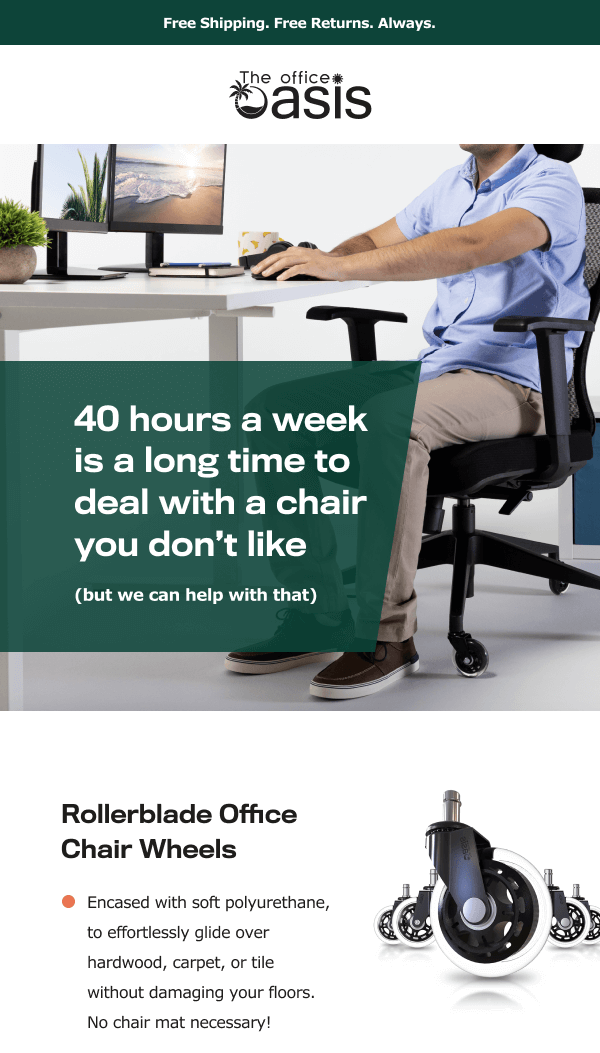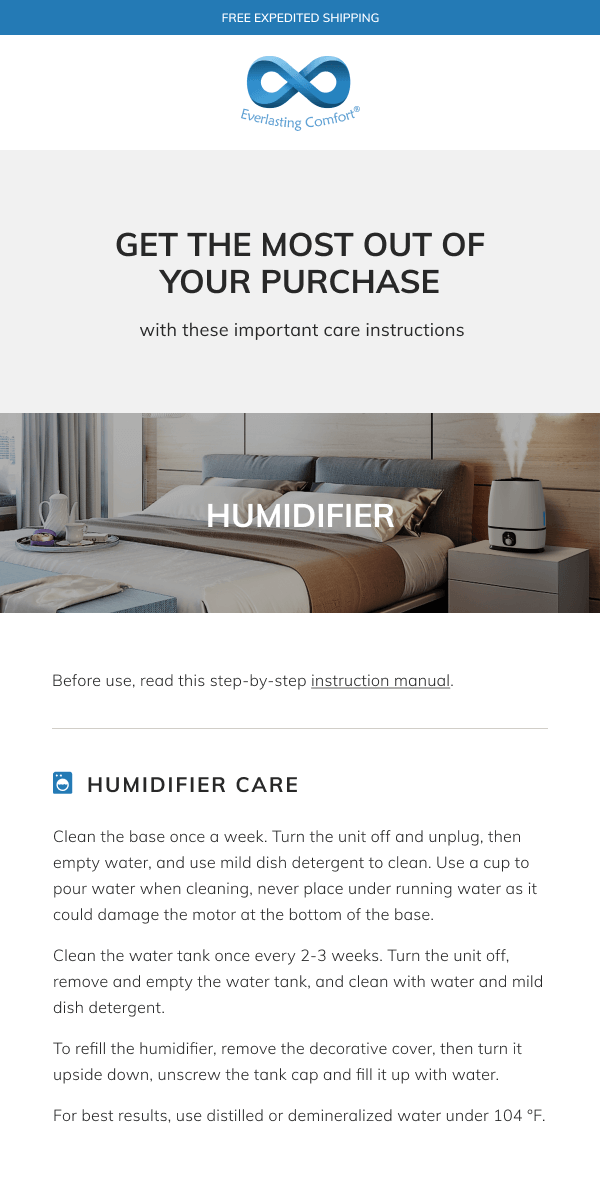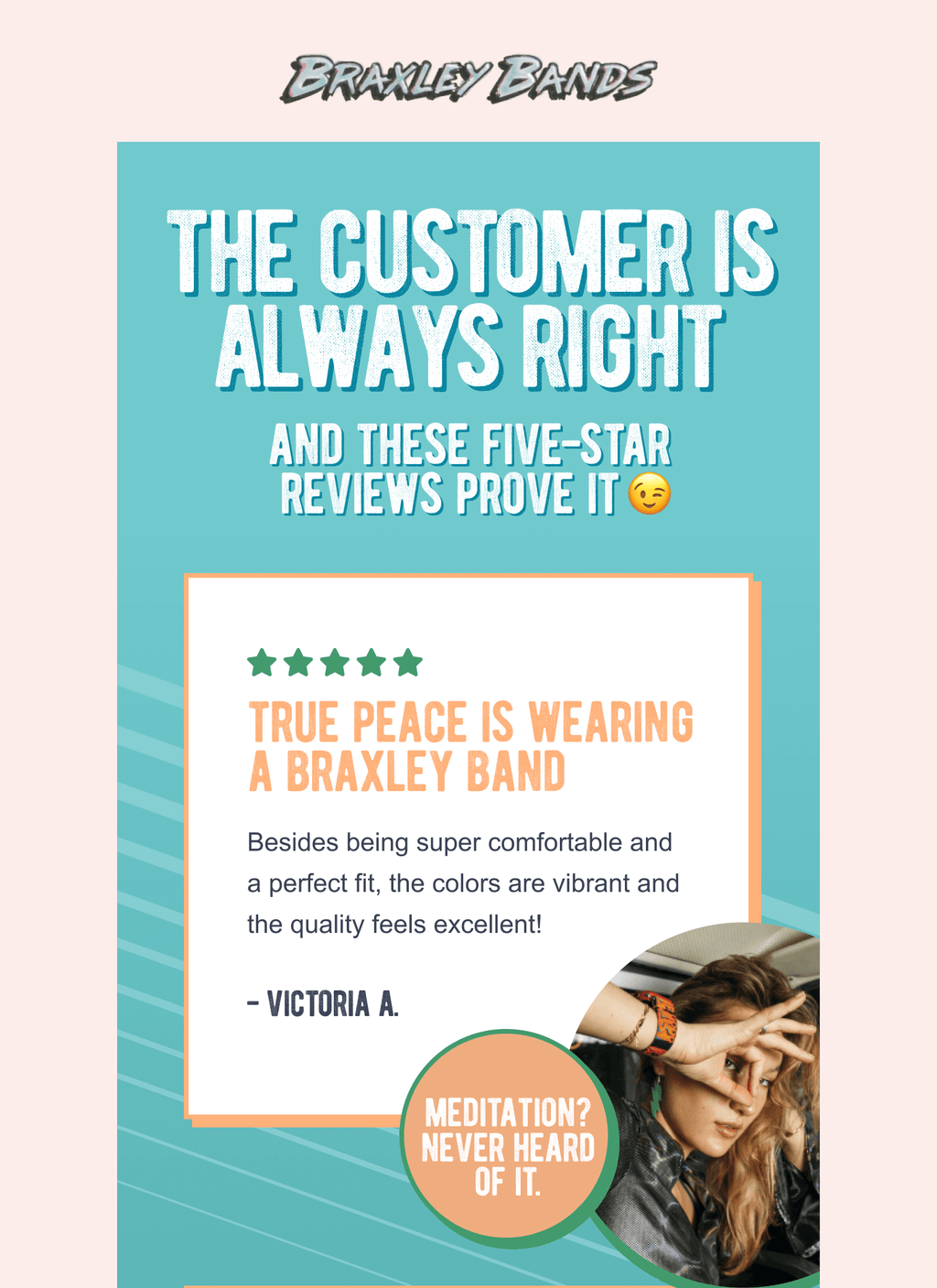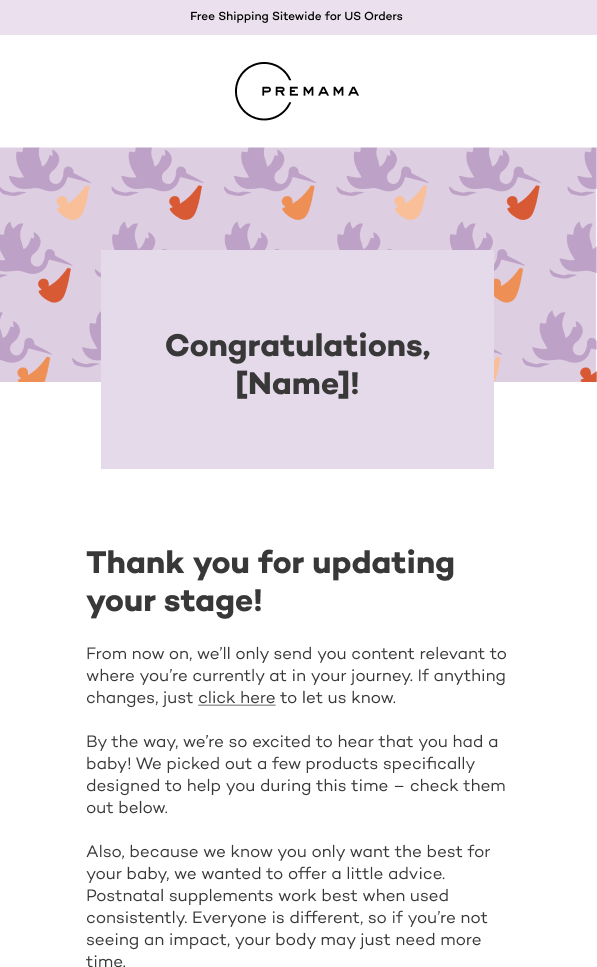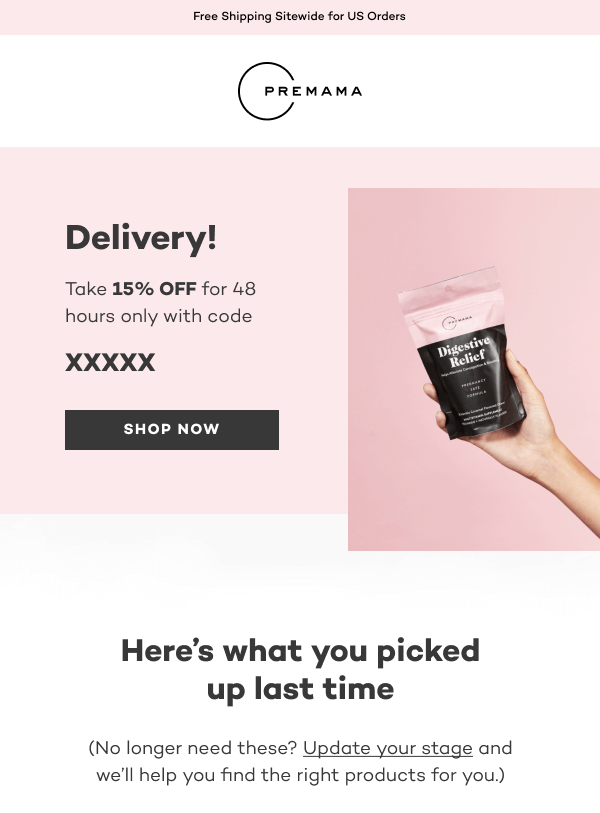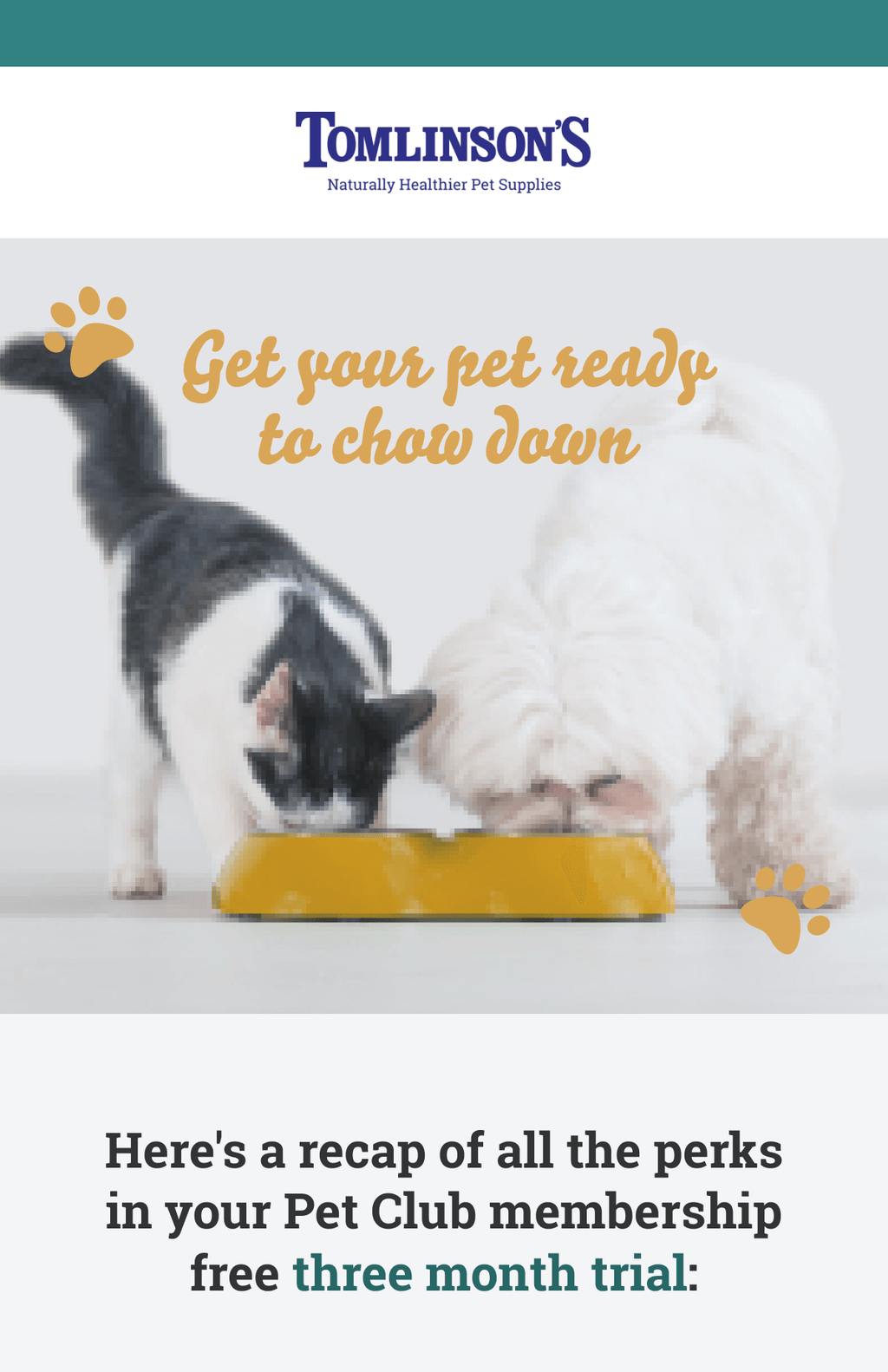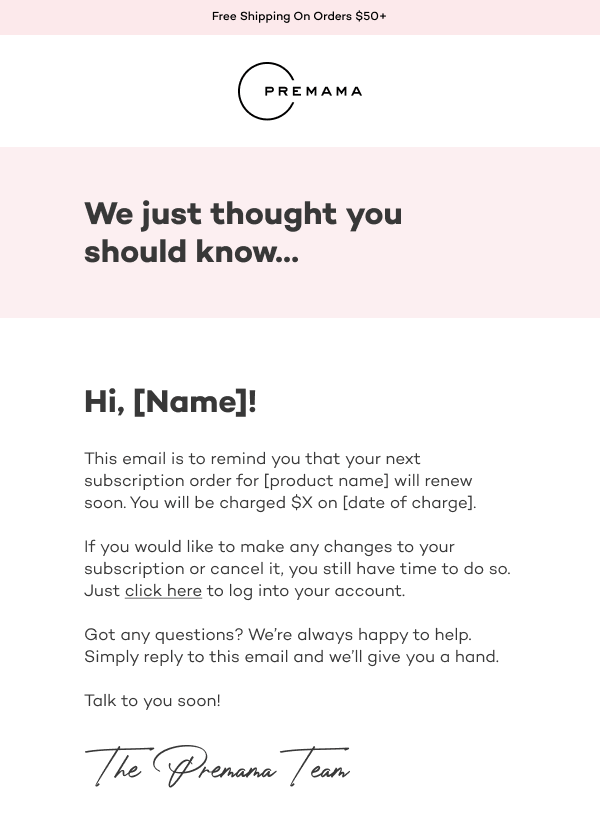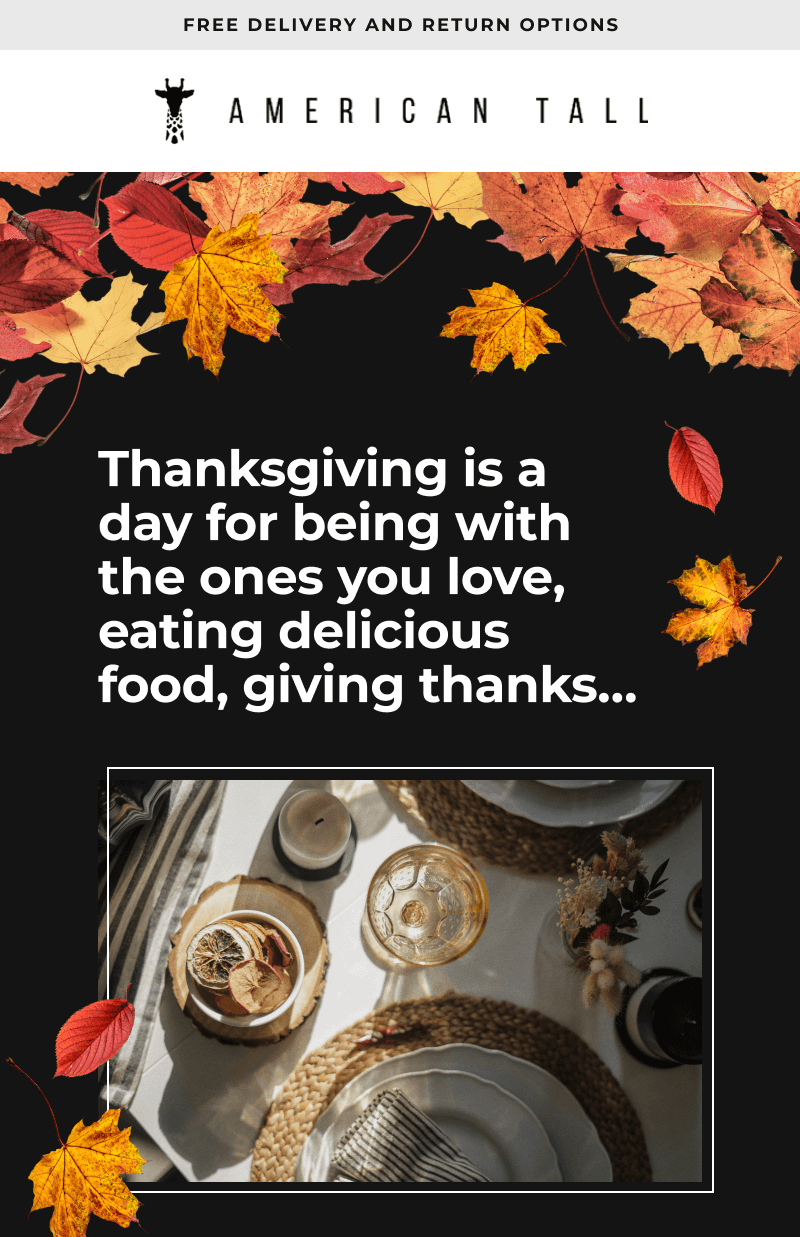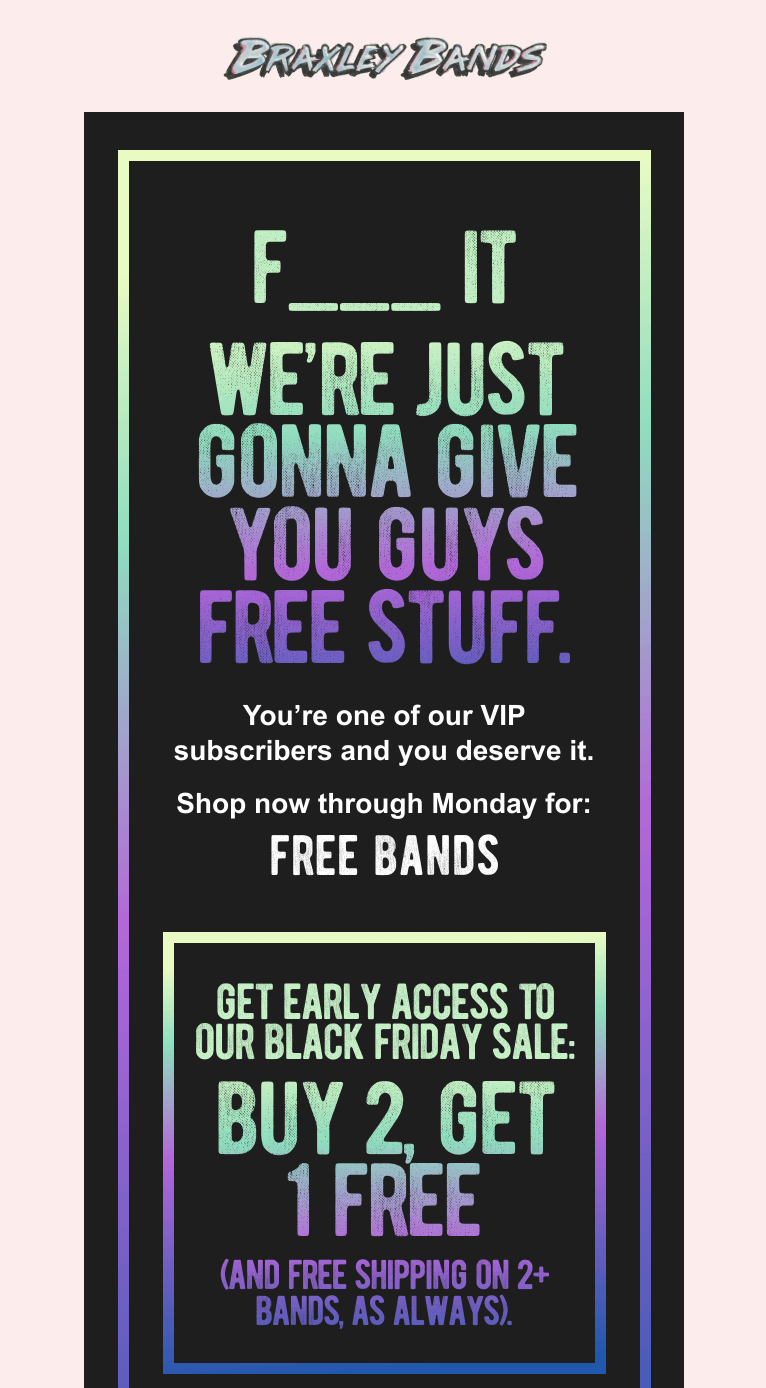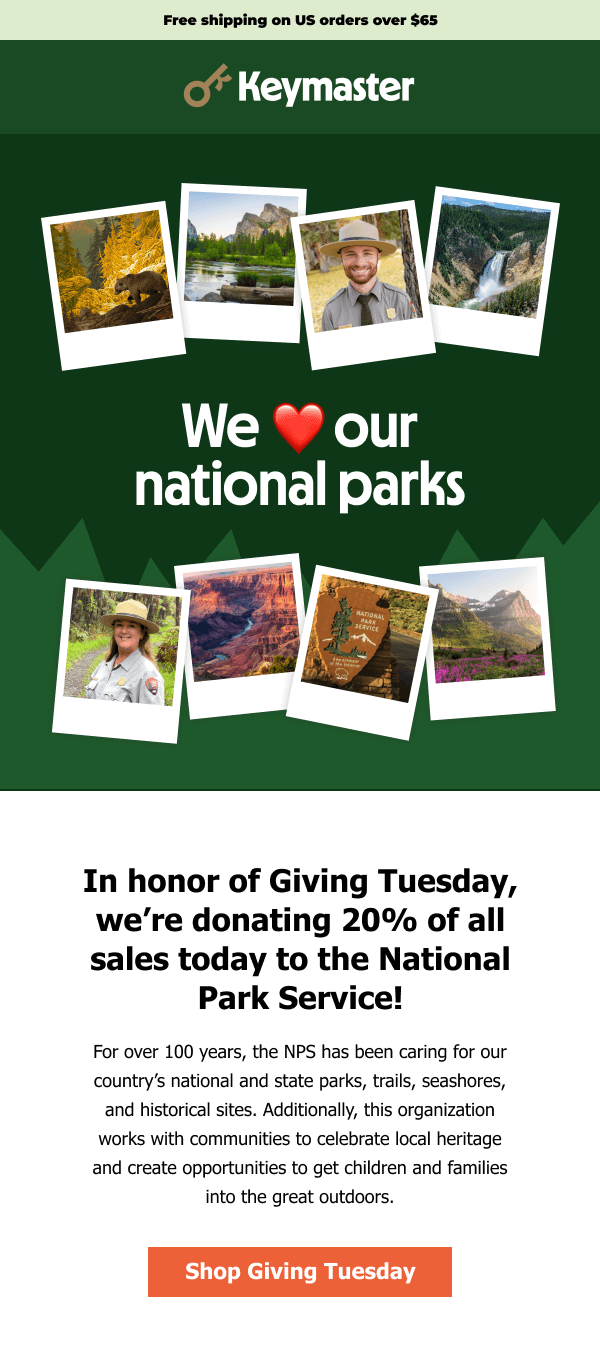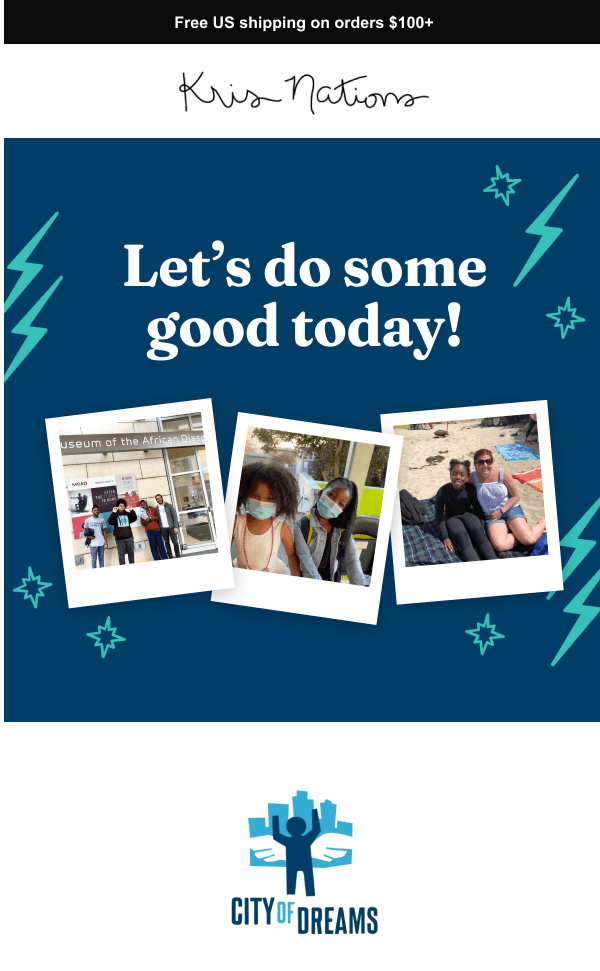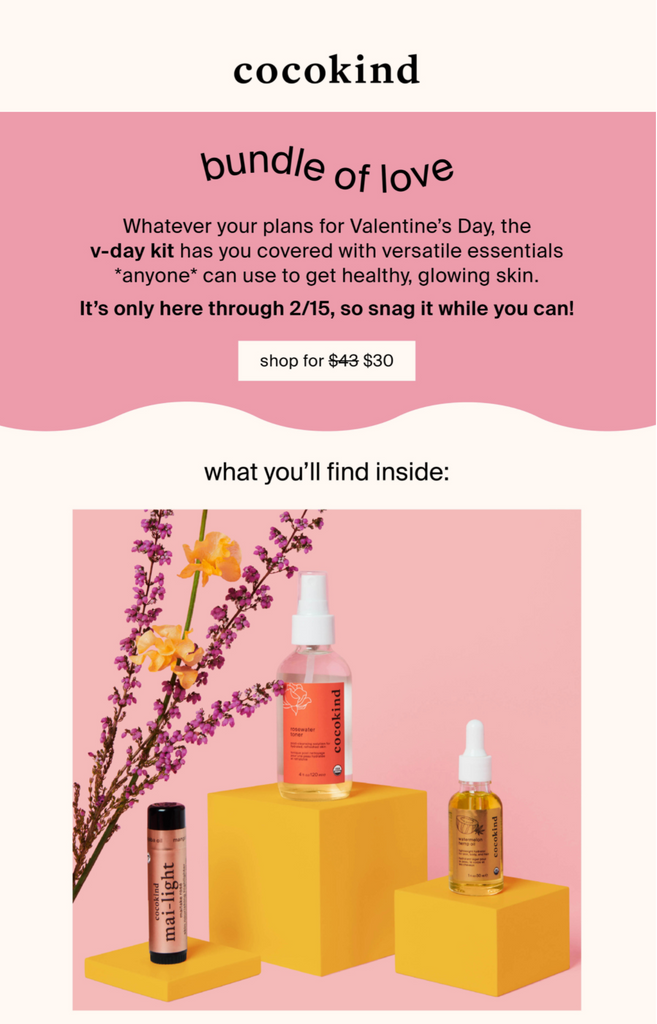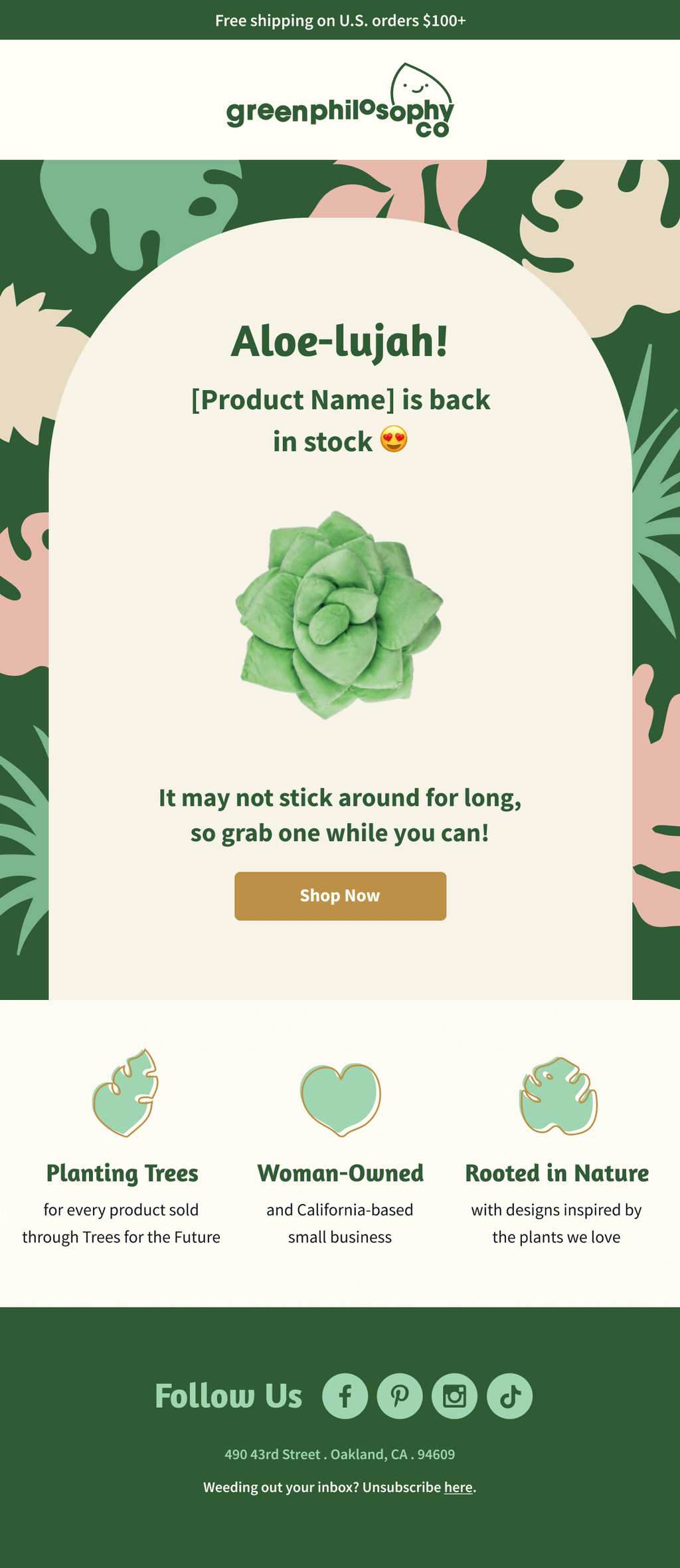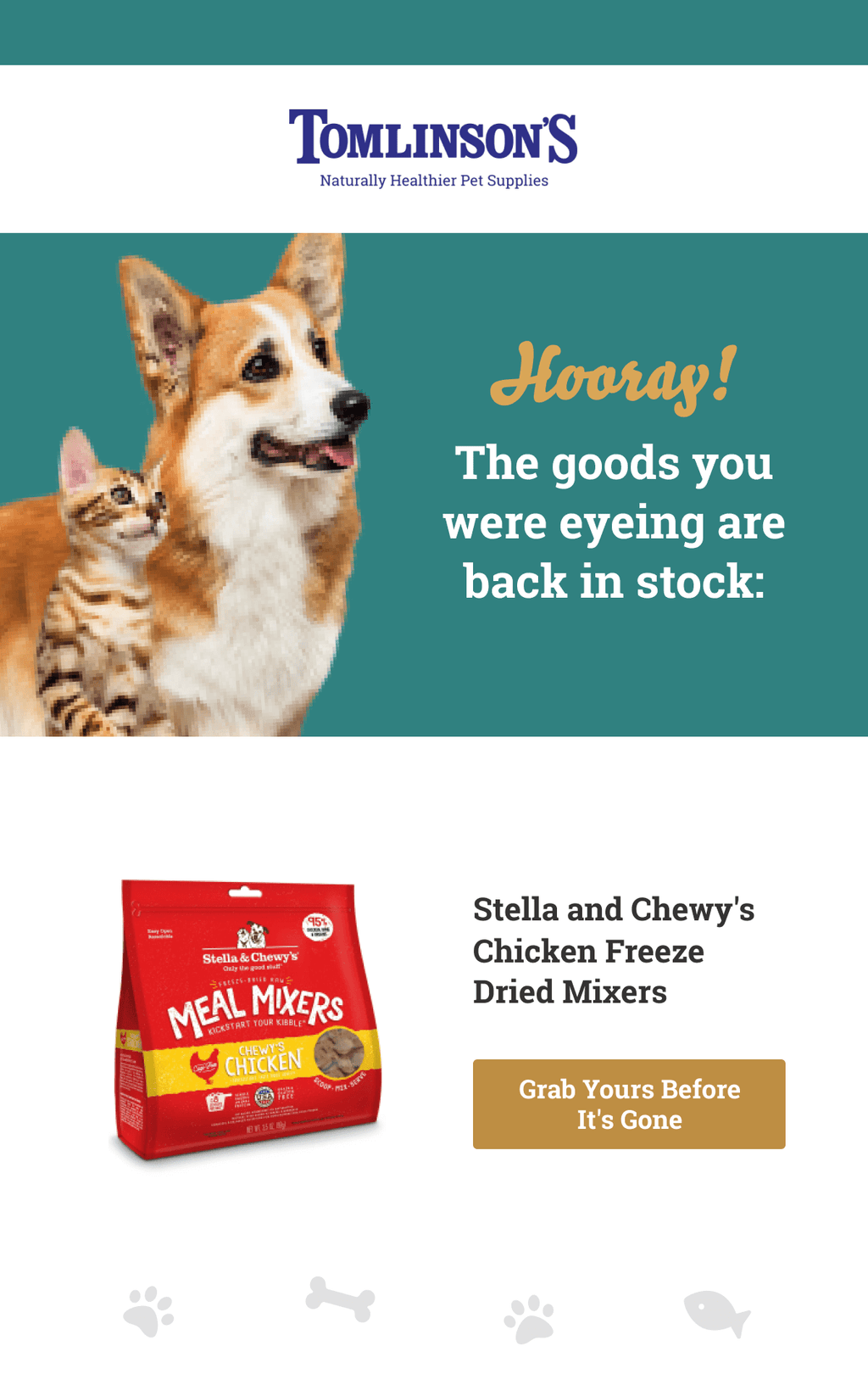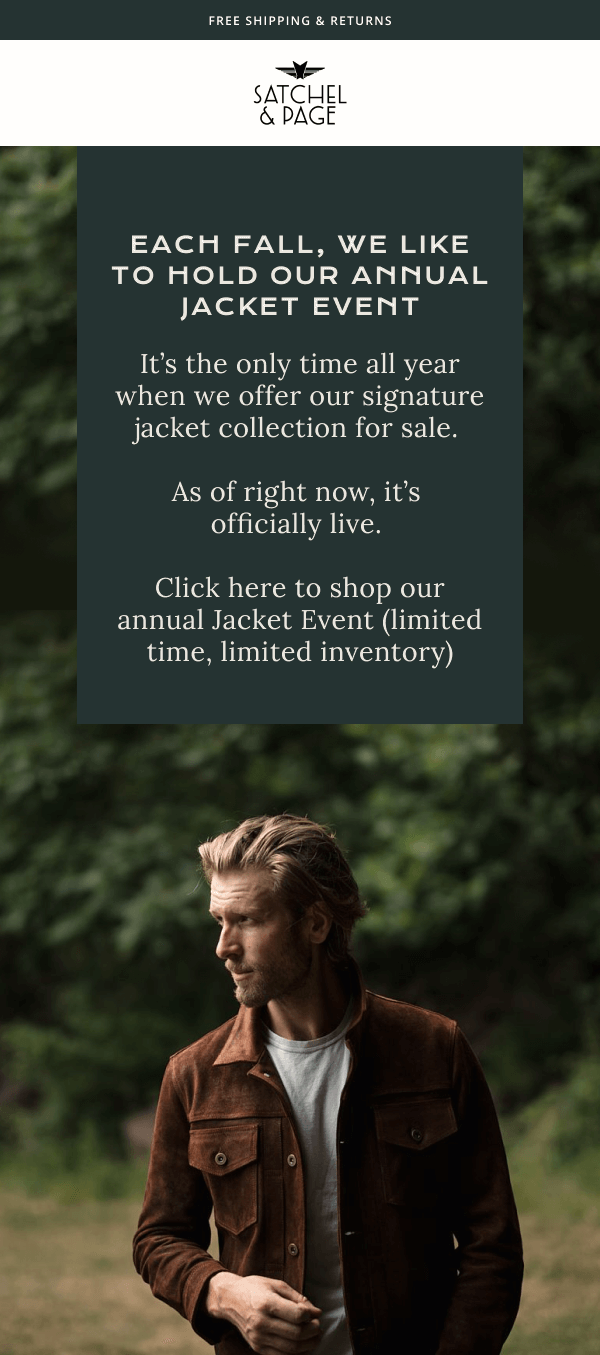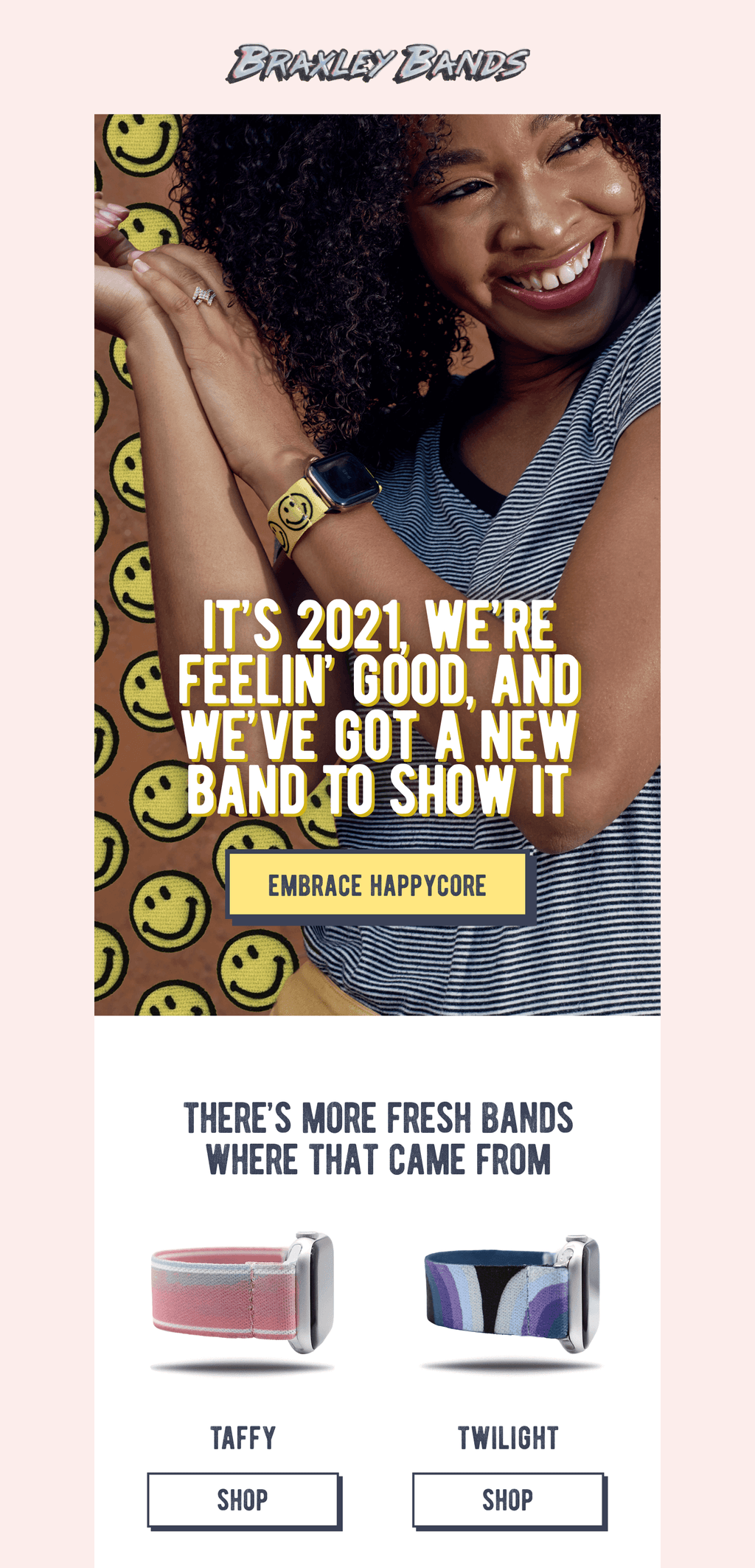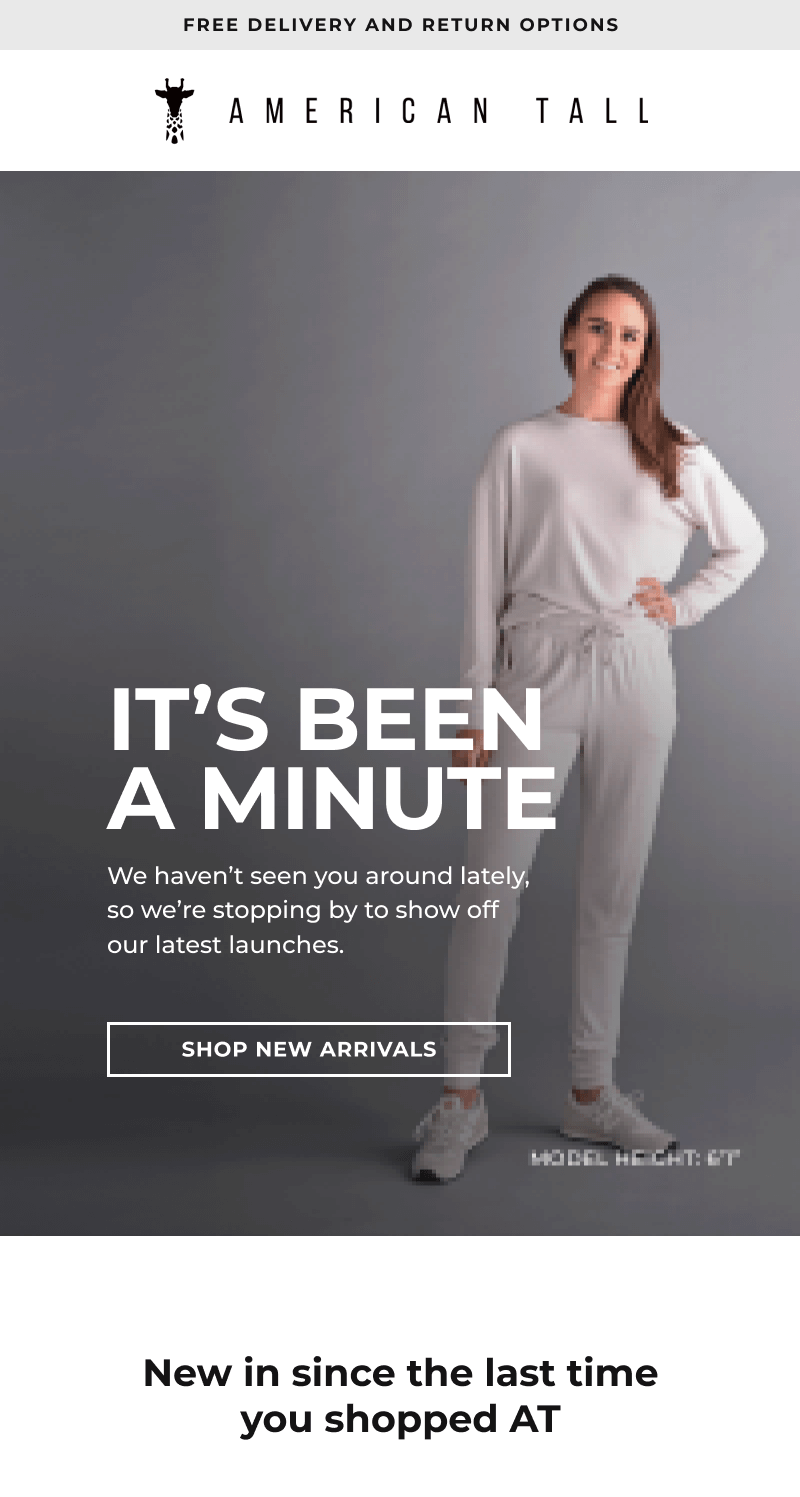Every successful business has a good balance between acquiring new customers and retaining current ones. And as an ecommerce brand, it’s especially important to maintain the retention side of your business with acquisition costs becoming more expensive.
Here’s the thing: retention can be tricky.
Building those memorable, long-term relationships requires you to know your customers well and offer them an ongoing, engaging customer experience. This is why email automation is an absolute necessity if you’re running an ecommerce business.
Not only is email a channel that you completely own (meaning you choose who you’re targeting, when your communicating with people, and what your messaging is), but email technology has become so sophisticated that you can create extremely personalized email journeys for every type of customer.
You’re probably already doing email marketing to some extent and wondering, “How can I level up?”
Don’t worry—this article will help you. We’re sharing a giant list of email marketing examples, including strategies behind each type of flow and campaign, right here.
The difference between email flows and email marketing campaigns
Campaigns are a one-time email or SMS that you send to a specific list or segment of users. These are manually scheduled and usually related to specific holidays or occasions, like Black Friday. A few examples of campaign emails and SMS include product launches, sales, and giveaway announcements.
Flows are automated emails and sequences that are triggered by specific criteria you set up in your ESP’s backend. It could include just one email or a series of emails that begin once the user meets the conditions of that flow. For example, if a user adds an item to their cart but then bounces off the website without finishing the purchase, you can automatically send them a flow of four emails to remind them about that product.
Building an email marketing strategy
Your email marketing strategy should include both flows as well as campaign messages. However, we’re going to focus on the strategy for triggered flows.
Once set up, these automated emails will be a constant source of revenue running in the background. So it’s important to map out a robust blueprint of all these emails.
Before diving into your strategy, you need to know what you're working with.
Step 1: Do an audit
Like most things, an email marketing strategy can't be built without first doing some prep work. This goes for someone new to marketing as well as for an agency that's swimming in emails all day every day.
First, start by taking a step back to define your audience and their interactions with your products. Ask yourself questions like
- What messages and values turn browsers into buyers?
- What questions do they ask your customer support team?
- What do they buy first?
- Who are they?
- When and why do they come back for a second order?
- And so on.
Even if you consider that you know your own brand like the back of your hand, take the time to think through all these things.
You will need a fresh understanding of your customer’s journey in order to know what to say at what time. This exercise will uncover how you can improve your communication and what value you can deliver via email.
Step 2: Building the strategy, branding, and creative brief
Step two is to lay out a map of the possible interactions you can create with email subscribers.
You'll need at least a basic understanding of what's technically possible in order to wrap your head around a strategy. So if you’re new to all this, note that a basic automated email marketing strategy includes the following triggered experiences:
- A lead capture pop up to collect email addresses (otherwise you'll have nobody to communicate with)
- A welcome sequence for recent email subscribers who are new to your brand
- An abandoned cart recovery sequence of emails
- A post-purchase experience
As you'll see further in this article, you can add many more emails to your strategy. However, these experiences are the lowest-hanging fruit that every store must have. Moreover, you can use the same thought process for your next batch of automated experiences.
When it comes to your branding, it’s important to have fun with it. It’s a simple concept, but when you’re having fun, so are your customers.
“Have fun with your email design and branding because this is your chance to show the viewer your brand's true personality. Stand out in a sea of competitor emails by creating some bold, unique designs. Adding motion to an email with eye-catching GIFs can also help grab the viewer’s attention."
- Lauren Schade, Designer at Fuel Made
Let’s look at an example using a welcome sequence
Start by defining who will receive these emails.
According to Kate Joseph, a copywriter on our team, “Your audience will dictate what you say and how you say it. First, you'll need to know your customer's demographics: gender, age, location, income, and interests. This is critical information because the way you connect with millennial and Gen-Z women shopping for hair products is quite different than how you would approach middle-aged dads on the lookout for grilling supplies."
For the purpose of this example, lets say our audience is someone just discovering your brand, so consider all the things you wish to share with this new subscriber.
That’s where you draw from your prep-work. This could include
- your brand story
- what makes your products stand out
- the values you believe in as a brand
- compliments you received from other customers
- the best seller that first-time customers tend to start with
Once you've listed these things out, you're ready to prioritize them logically. Think of what information will be the most likely to help them place an order depending on what stage they are at.
If someone just signed up to receive a discount code with a first purchase, share that information with them ASAP because that's what they'll be looking for. If that wasn't enough for them to buy on the spot, you can follow up by sharing your brand story and values so they understand why they might want to buy from you.
Perhaps they need a little help picking the right product, so next, you can highlight your best seller.
Still not convinced? Share some user-generated content so they see that others loved what you have to offer. Create some urgency around the expiring offer they signed up for but are about to lose. Finally, if that doesn't do it, they might need a different offer to take the leap. Or maybe a personal note from your founder to feel seen.
Regardless of the email flow (welcome, post-purchase, browse abandonment, win-back…) you should always ask yourself where your reader stands at that moment in regards to your product and what information will be the most helpful to help them solve their problem.
That’s how you will define what information to share at what time and to who through all the automated triggers available via Klaviyo.
Our library of email campaign examples and sequences
When you’ve been in the email game for a while, it can feel like you already tackled every type of flow and campaign possible. But trust us, there’s always something new you can come up with.
The list below is what we’re calling our “menu of email campaigns and sequences.” It’s broken down by both flows and campaigns, featuring examples and tips for each.
It’s essentially a full list of email inspiration.
You can visit this list when you need a new email marketing idea—or check out some best practices for a specific type of flow.
1. Transactional flows
Transactional emails are triggered based on, well, a transaction. They’re how brands communicate updates to customers who made a purchase.
Common ecommerce transactional emails you’ll see in these flows include
- Order confirmation
- Shipping updates
- Delivery confirmation
- Refund confirmation
Some brands will only send order confirmation emails, but it’s best practice to keep customers updated throughout the entire shipping process. This builds trust and leads to a stronger brand-to-consumer relationship.
Here are a few transactional email examples to check out (just click to enlarge the photo).
Looking to spruce up yours? Read these transactional email best practices first:
- Share the expected content first: in an “order delivered” email, start with the shipping details, then maybe show other items they might want.
- Include as many useful details as possible, such as explaining how to contact support and where to find the information they might need.
- Take advantage of very high open rates by putting your best foot forward: share a little about who you are and your values.
Finally, use timing within the flow depending on what shipment program you use so you aren’t sending too many updates. Some systems will send Klaviyo an event every time the package is scanned. That will lead to some very annoyed customers if you have an email go out each time.
2. Welcome flow
When a customer shares their email with you for the first time—through a pop-up, banner, or purchase—it’s essential that you follow up with a personal welcome flow.
Before you ask, “How many emails should be in a welcome series?” Just know there’s no rule about this, and it depends on how many emails you think you need in order to share the right information with customers and provide value.
Generally, a good pace is to send each email one day apart at the start because the customer just showed high interest—you need to be present at this time. Then towards the end, you can start spreading them out more. We tend to send 5-6 emails in a welcome flow with each email providing high-value and entertaining content.
But if you’re wondering what kind of information your welcome emails should have, our email specialists recommend the following:
- Show the code (if they signed up for an offer) above the fold, and make it easy to use by explaining how to apply it.
- Highlight best sellers to make it easy for a new visitor to shop
- Answer FAQs + let them know how to contact you
- Include customer reviews to build trust
Here are some examples of welcome emails pulled out of a longer flow from a few different clients (again, click to enlarge).
Since welcome emails also double as product pushes (especially if you’re incorporating a discount), you need to have a flow filter for ‘placed order zero times since starting this flow.’ Then, once someone makes a purchase they’ll exit and enter the post-purchase flow.
3. Abandoned cart emails
When a customer abandons their cart, follow up with a couple of emails to remind them about what they’re missing. On average, we send four abandoned cart emails spaced one day apart.
The first email we recommend is just a plain-text email. Essentially, an email with no design elements, so it doesn’t feel like the customer is being sold to. Instead, it feels like someone from the brand is personally reaching out to be helpful.
Here’s a great example from Braxley Band’s abandoned cart flow (converting around 20% of abandoned carts).

This first plain text email should come from someone on your brand’s support team with simple and nurturing messaging. Finally, include multiple links back to the customer’s cart—one at the beginning of the email and one near the end.
For the other emails in your abandoned cart flow, highlight your store and product values to connect with the customer, and don’t distract the user with any other links. The goal is to get them to convert by linking them back to their cart.
For some inspiration, check out a few of the abandoned cart emails we created below.
P.S. Want a free abandoned cart checklist based off one of our client's flows that converts 20% of abandoned carts? Click here to download it for free.
4. Browse abandonment emails
Similar to cart abandonment emails, you can send browse abandonment reminders to email subscribers that spend time browsing a product and end up bouncing off the page without adding anything to their cart.
However, you shouldn’t send these as frequently as abandoned cart emails. Customers browse products all of the time that they don’t end up purchasing, and it will get annoying if they get an email every time they leave a product page behind.
When you do send these emails, share helpful information about the product that might help push them over the line to make the purchase. This is also another good flow to show reviews, UGC, social proof, and blog articles about your products.
5. Loyalty and referral emails
You should promote your loyalty and referral programs in a number of different places because these are important benefits that your shoppers might not be aware of.
For example, a potential customer might decide to place their first order after learning in your welcome flow that they'll get an enticing benefit when joining your loyalty program.
Or if you share referral benefits with a new customer excited about their first purchase, they're likely to help promote your brand through their network. So make sure to mention these at judicious times within your flows.
Once in a while, you should also send a campaign dedicated to these benefits as a reminder. And on top of that, you can have email sections that you sprinkle throughout your flows and campaigns as a reminder.
Finally, don't forget to send regular updates about their points balance, referral perks, what they can do with their points, and any program updates you make.
Here are a few of our referral and customer loyalty emails:
6. Post purchase emails
Your post-purchase strategy should be highly customized to your brand and your products. The timing, the cross-selling suggestions, the educational information will all be uniquely tailored. However, I'll list out a few general best practices to keep in mind.
- Send a Thank You note to first-time buyers and a different version to repeat customers, about one day after they buy. Customers will appreciate the gesture of gratitude!
- Make sure to exclude people who canceled or returned their orders. Also make sure a customer is only in your flow once at a time, since they'll trigger the flow for each new order.
- Build a conditional split between first-time buyers and repeat buyers and create custom email content for each type. This gives you an opportunity to create messaging that’s more relevant to each type of buyer.
There are so many types of emails that can go into this flow, so we’ll share several examples that you can include below. That way, you’ll never run out of ideas (which is the whole point of this article anyway!).
Thank you emails
When customers make a purchase, thank them for their order. And yes, this is different than sending an order confirmation email.
If someone spends money to purchase something, they’re initiating a relationship with you, but it’s up to you as the brand to nurture it.
First-time customers should get a different thank you email than repeat customers. Here’s an example from Office Oasis, which sends repeat customers something a bit more personal since they’re showing loyalty by purchasing again.
Behind the scenes
Do you know what customers love to see? How your products are actually made. Giving them that insider look tells them they can trust you because you’re literally giving them insight into your secrets.
Okay, maybe they aren’t secrets. But this is a good way to show off high-quality premium products and the detail that goes into creating them.
Product recommendations
Based on what a customer purchased, you should have a pretty good idea of the products they’re into, their concerns, and where your brand can help them become a better version of themselves.
For example, if someone purchases a moisturizer for oily skin, other products related to oily skin are good recommendations for them.
In your post-purchase email flow, don’t forget to upsell these other products to drive customers back to make another purchase. These don’t have to be boring either—there are fun and creative ways to highlight more products, like how Green Philosophy does in this astrology email.
Highlight social channels
Once you have customers engaging with you on email, you can try to sync them up with your other marketing channels, like social media. Promoting these channels could be just a smaller section in another email or you can send a dedicated email about it.
It might confuse readers if you offer links to every social media channel. They might not be sure which one to click if you have Facebook, Instagram, Twitter, TikTok, Pinterest, etc.
Choose your best channel (or your most important one), and highlight it by explaining why customers should follow you.
Shipping and returns policy
If you get a ton of support tickets related to shipping and returns, you may need to spend more time explaining your policies to customers.
In addition to having these policies shown clearly on your website, you should explain how shipping and returns work in your email communications.
You don’t need to send a dedicated email about these, but including a block somewhere on various campaigns and flows is helpful for customers who just made a recent purchase.
SASnola does this well, which you can see in the email below where they dedicate a big section to explaining their policy for returns and exchanges, return shipping costs, and when customers can expect refunds (PP3).
They also call out how customers can contact them in case they do have questions about shipping, returns, or general satisfaction. This is helpful for customers because then they don’t have to go try and hunt down the contact page on the website.
Product benefits
What features do your products have that make them better than your competition? What problems are you solving for customers? What are the main benefits of using them? What reasons are there for customers to make another purchase?
All of these questions should be answered in at least one email in your post-purchase flow.
Here’s a great example from SASNola. In the eighth email customer get after purchasing, SASNola explains why they should get another pair by highlighting a few benefits of having more than one pair of SASNola shoes.
FAQs
If you’re seeing common questions come through your support channels, it may be a good opportunity to educate your customers a bit on those topics.
Email is a good channel for this, especially if you make it part of your post-purchase flow so customers are educated on everything they need to know to be successful with your products.
Premama has several email examples where they educate customers on commonly asked questions about pregnancy health.
Customer survey
To collect customer reviews and discover ways to improve your product or customer experience, ask users to fill out a survey.
You can incentivize this like Tomlinson’s Feed does in the example below, but you don’t have to. If you include it as part of your post-purchase flow, you’ll get a decent number of responses. Just remember to make sure this email only arrives after a user has received their product.
Educational emails
Similar to FAQ emails, educate customers on the best ways to use your products. This could include how to clean your products, how to apply the product to your skin, the best time to use your product, or how to care for your products to keep them in the best condition.
Here are a few educational email examples below.
7. Reviews and UGC
Reviews are one of the best ways to build trust with customers. And people search for them all of the time before buying something new. In fact, about 95% of customers read reviews before making a purchase, according to a report by Powerreviews.
You can tie reviews and UGC in with other email campaigns and flows, or you can send an email that’s entirely dedicated to showing off your awesome reviews. Braxley Bands did this, using elements of humor to drive the point that they have a lot of satisfied customers.
Wondering how to collect more product reviews? Try the following methods:
- Send a post-purchase survey asking about customer satisfaction.
- Send an email after the customer’s product arrives and link them to the exact PDP for them to write a review.
- Display your reviews on individual PDPs, and allow customers to easily write one from the page.
- Incentivize a review with loyalty points (and offer more points if they share a photo).
- Add QR codes with shipments where customers can easily scan the code and be directed to a review form.
8. Preferences update
The tiniest bit of personalization can go a long way to improve your engagement rates on email. In fact, after asking customers via a pop-up if they were interested in Men and/or Women's collections, American Tall was able to increase its welcome flow conversion rate by 2X (it now converts 11.06% of customers).
In addition to asking customers via a pop-up, you can send an email campaign asking them to update their preferences on a landing page.

After collecting this information you'll be able to create unique paths and email types to send more personalized information. For example, sending only dog food and dog toys to customers who said they own a dog and not a cat.
You can also add a link within your email footer to make it easy for your subscribers to update their preferences at any time. Once they update their preferences, send an email confirming that you’re updating the type of content they receive.
9. Winback emails
A winback email campaign is used to reach out to inactive subscribers to try and get them to engage again. It could be to try to get them to make a purchase or simply open and interact with your emails again.
When should you send a winback email? The timing depends on your product and buyer journey, but we send these anywhere from six months up to two years.
These emails should share interesting information, showcase new products or current bestsellers, highlight product benefits, or offer a special discount. But if you want to take these emails to the next level then you can segment them based on the user’s past purchases. More relevant offers will always lead to better engagement.
In your customer winback emails, explain to customers how they can reach your customer service team if they have any questions or need help. This will help rebuild trust with those customers who haven’t stayed up to date with you.
Also, don't forget that this customer might have forgotten who you are and what you sell. So make that clear from the start.
10. Ecommerce subscription emails and membership emails
The key to membership and subscription emails is clear, consistent communication.
Customers don’t want to be surprised by a monthly charge on their credit card, so keep them updated with upcoming charges, cancellations, renewals, and any other important information.
Don’t forget to highlight the benefits of being a part of the program—this will help drive membership retention.
11. Holiday campaigns
When it comes to holiday emails, there are always the traditional ones you can participate in, like Mother’s Day, Father’s Day, Thanksgiving, Black Friday, Cyber Monday, Christmas, and New Year’s.
But there are also a lot of unique, smaller holidays that you can use to inspire fun campaigns, which give you a good reason to email your customers. (For example, did you know February 9 is national pizza day?)
Every holiday email will be unique—with its own strategy. But I know you’re here for the examples, anyway, so I’ll just dump a few related to different holiday campaigns below.
Halloween
Thanksgiving emails
Black Friday email examples
P.S. check out our Black Friday/Cyber Monday email marketing tips article to see more examples.
Christmas

New year’s eve
Giving Tuesday emails
Valentine’s day
12. Sales and other promotional emails
If you’re launching a sale, usually it’s tied to something specific—like a holiday. It’s best you make that connection clear to customers in your email copy.
"Words like ‘20% off’ and ‘free shipping’ are attention-grabbers that, when used in email subject lines, will often increase open rates. When you have an offer for customers, always use that to your advantage."
- Kate Joseph, Copywriter at Fuel Made
For example, using the back-to-school season in August, Satechi created a 20% off sitewide sale to promote products that are relevant to students, like a laptop bag, keyboard, and charger.
You don’t want every email newsletter to be sales-related (otherwise you’re training your customers to expect it). To find other reasons to email customers, pay attention to trends and seasonal opportunities.
In the second email from Satechi below, they use the fact that most people work from home now to send an email about upgrading your home office. And again, they promote their products relevant to this topic.
P.s. Don’t forget to have a clear CTA!
13. Back in stock emails
If you’re a CPG brand, you likely have products that you continue to restock. It can also be common to run out of stock on popular items.
To tackle this, set up a “back in stock” notification to customers who are interested in the product. This notification should go out immediately once the item is back in stock.
That being said, not every customer who requested a reminder will end up making a purchase. For those customers, send another reminder about two days after the item is back in stock.
It’s key to dynamically display product details using tags in “back in stock” emails. For example, use coding in Klaviyo (or whatever ESP you use) to show the product image, title, and CTA to the specific PDP.
14. Announcement emails
Product launches, company updates, events, new partnerships, giveaways, and contests—these are all good reasons to email your customers and share an interesting announcement.
These emails should be fun, featuring great imagery and engaging content. Check out the examples below.
15. Promoting SMS subscriptions
Email can be a good tool to drive people to your SMS channel, but there are a few best practices to keep in mind. For example…
- When sending out these types of campaigns, exclude any customers that already subscribe to SMS. Otherwise it’s just noisy.
- Keep your messaging straightforward and simple. If your goal is to drive people to subscribe to SMS, don’t distract them with other CTAs.
- Make it easy for them to subscribe. With one click, by texting a number, or by typing in their phone number. There shouldn’t be multiple steps to make this happen.
16. Sunset email flows
A sunset flow is sent as a last effort to rebuild a relationship with a customer who hasn’t engaged with any of your emails for a while. You can either win back someone’s business, or if they still don’t engage you can delete or suppress them off your email list for good.
First set up your trigger for when users go into a sunset flow (based on the length of time since the user last engaged, such as 120 days or 180 days). We tend to build three emails as part of this flow—all are plain text emails to give the user a last chance to show interest.
In the second email, we’ll offer a promotion, and the third is short and sweet letting them know we'll remove them from the list if they don't click the email link.
At the end of your Sunset flow, create a conditional split to mark profiles as unengaged if they didn’t interact with the third email.
Speaking of Sunset emails and cleaning your list, we thought it would be helpful for you to learn a bit more about email list health and improving email deliverability, so we’ll share a bit on that next.
Best practices for list health and deliverability
You keep your list healthy the same way you care for yourself: with good habits and by consistently feeding it great content. You can't wake up one day after years of bombarding your list with fast-food spam because by then it will likely be too late.
Here are a few best practices for email list cleaning.
Why should you care about your email’s health?
Think of it this way: Sending to an unhealthy list will inevitably lead to decreasing open and click rates, which tells your inboxes that your emails are not wanted.
In return, inboxes will start flagging all your emails as spam, meaning engaged and unengaged subscribers alike will no longer receive your updates. Yikes.
Automated experiences will greatly help with your overall list engagement. These emails react to your customer's actions with content specifically relevant to their situation. So you'll definitely want to rely heavily on your triggered emails for communication.
First, give a warm welcome and send regular updates
Start by making sure that anybody who signs up to your list gets a warm welcome. Otherwise, they'll forget about you and won’t open anything you send in the future.
In parallel, thoughtful campaign emails will also strengthen your relationship with customers and can generate a big chunk of revenue. You'll want to send newsletters to communicate time-sensitive and engaging value with your audience. Yet, you need to make sure you share with people who are interested in your content.
Segment customers intelligently
The number one best practice for keeping a healthy list is to segment it intelligently. The easiest way to protect your deliverability would be to send a majority of your campaigns to an engaged segment only so you can maintain an average open rate higher than 20%.
For instance, you can single out readers who have opened and clicked your emails in the last 90 days. Once in a while, you'll want to open up that segment to the less active readers (eg. for Black Friday deals) but most of the time, if you have healthy automation and someone hasn't opened anything recently, you shouldn't bother them with general updates.
Understand what your customers are interested in
Next, you can get more specific with your segmentation by understanding what your customers are interested in. Either analyze their purchase habits or ask them directly what they want to read about. That way you give them a chance to control the incoming updates, and this kind of zero-party data helps you personalize your flows and campaigns better.
Send sunset campaigns
If someone has been on your list for a while (perhaps a year) and hasn't opened any of your sends since then, it's likely time to part ways. You can try one last-ditch effort with what is called a Sunset Flow.
These emails try to grab the attention and re-engage indifferent subscribers. We shared a few examples in our menu of email ideas earlier in the article—in case you skipped past. ;)
Whoever still doesn't interact with your emails might as well be suppressed. That way you avoid sending them emails they won't open and you stop paying for their profile in Klaviyo.
Create a suppression list
Make sure you suppress profiles rather than delete them. Suppressing profiles means you no longer pay for them, but you keep all their data in case they decide to subscribe again in the future. If you delete them, you lose all their historical interactions with your store and emails.
Note that Klaviyo automatically suppresses hard bounces (email addresses that are wrong and will never receive messages). Klaviyo will also automatically suppress email addresses that soft bounce seven times in a row. Soft bounces occur due to temporary delivery issues; perhaps the inbox is no longer active or is full?
Be consistent in the value you send
Of course, on top of all of this, you’ll maintain a healthy, growing email list by consistently sending high-value, engaging content that follows email marketing best practices.
At the end of the day, if all you’re doing is sending repetitive, boring emails even your most loyal customers will get tired of it and stop opening.
Time to use these email marketing campaign examples to your advantage
Now that you’ve seen our giant menu of email examples, it’s time to update your flows and campaigns so they speak well to your target audience and achieve your business goals.
AKA, make your own successful email marketing strategy
Remember, before creating any emails, start with a strategy. You should understand your target audience, and then audit your current email strategy to discover where the areas of opportunity are.
Yes, email can be a much bigger task than marketers think it’s going to be, especially if you’re trying to build out more complicated flows. But that’s why there are partners in this industry for you to rely on.
If you’re considering an agency to help you with a full-service email marketing strategy, this is a service we offer. You can visit our contact page here to get in touch.
You can also check out our email inspiration page here to see more examples of beautiful emails.
Good luck!
This article was co-written by Tina Donati and Lisa Oberst.

